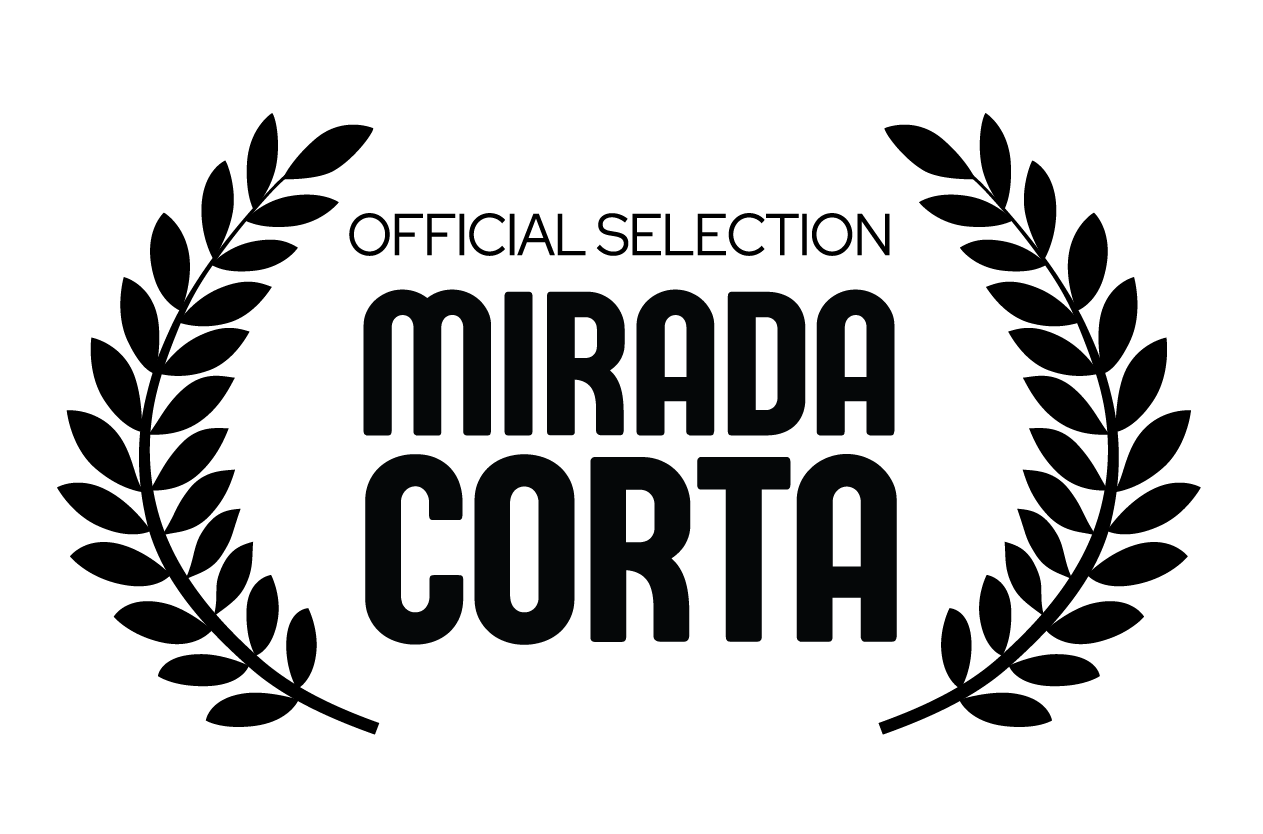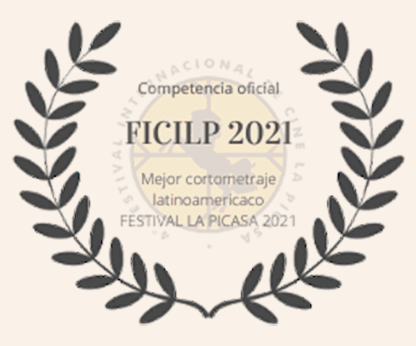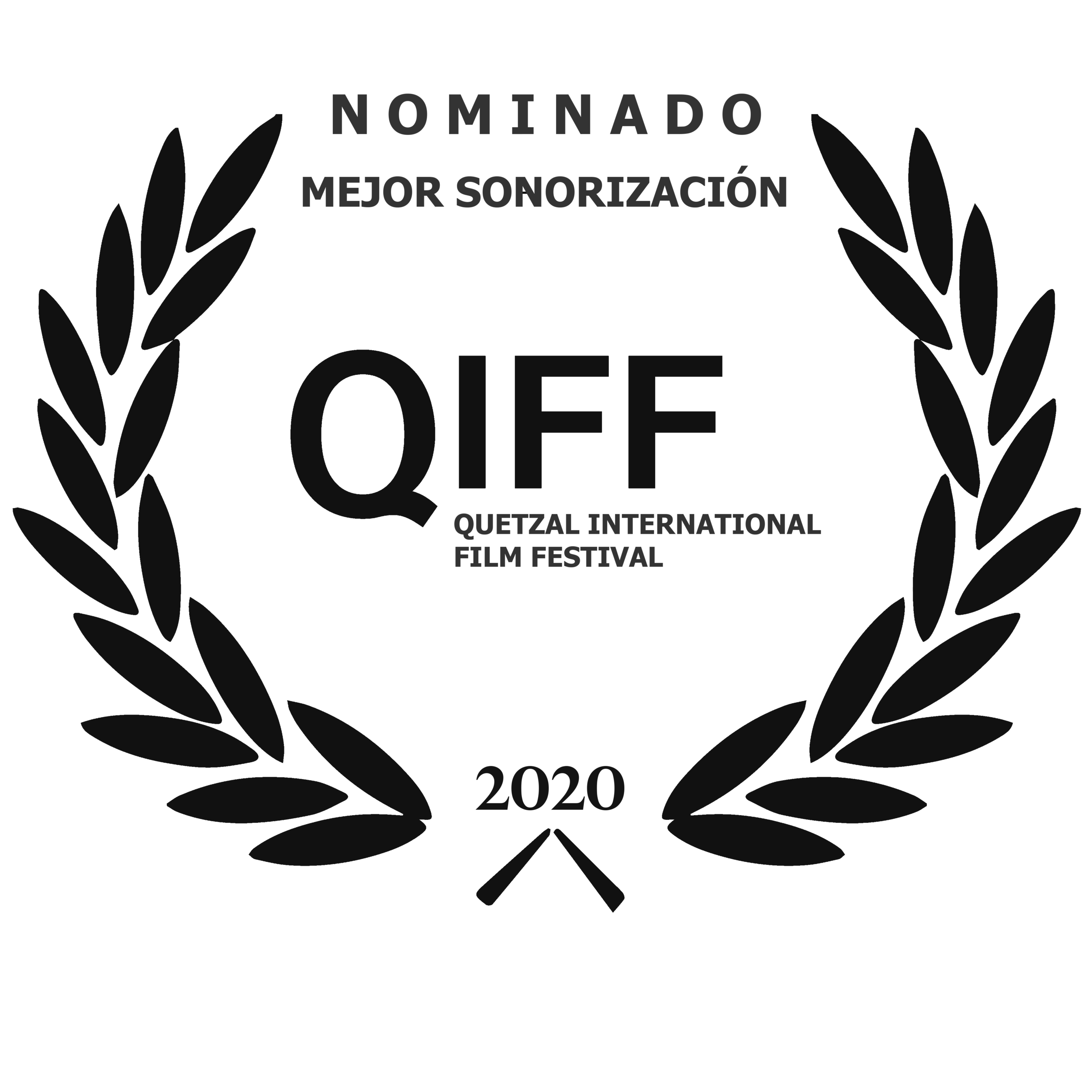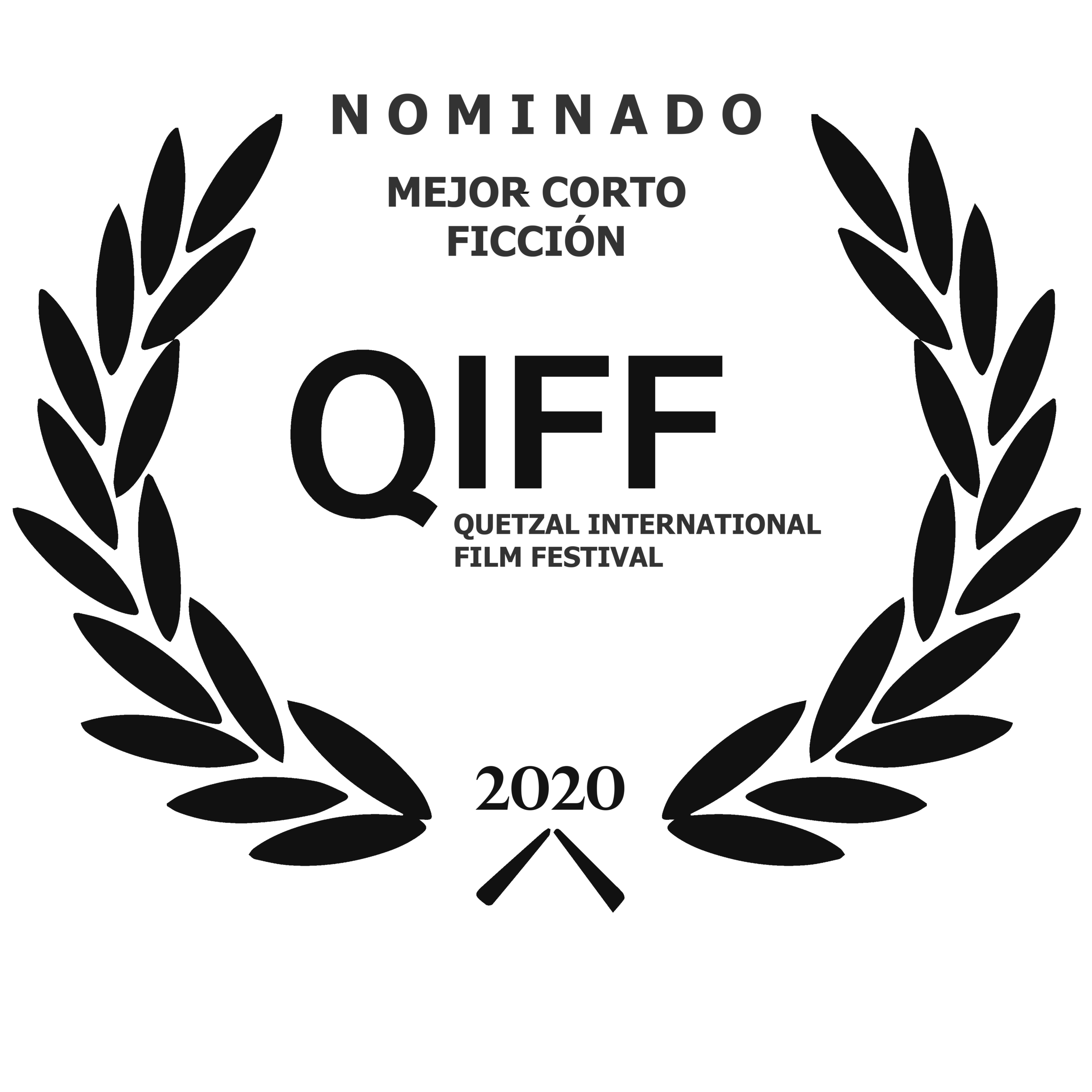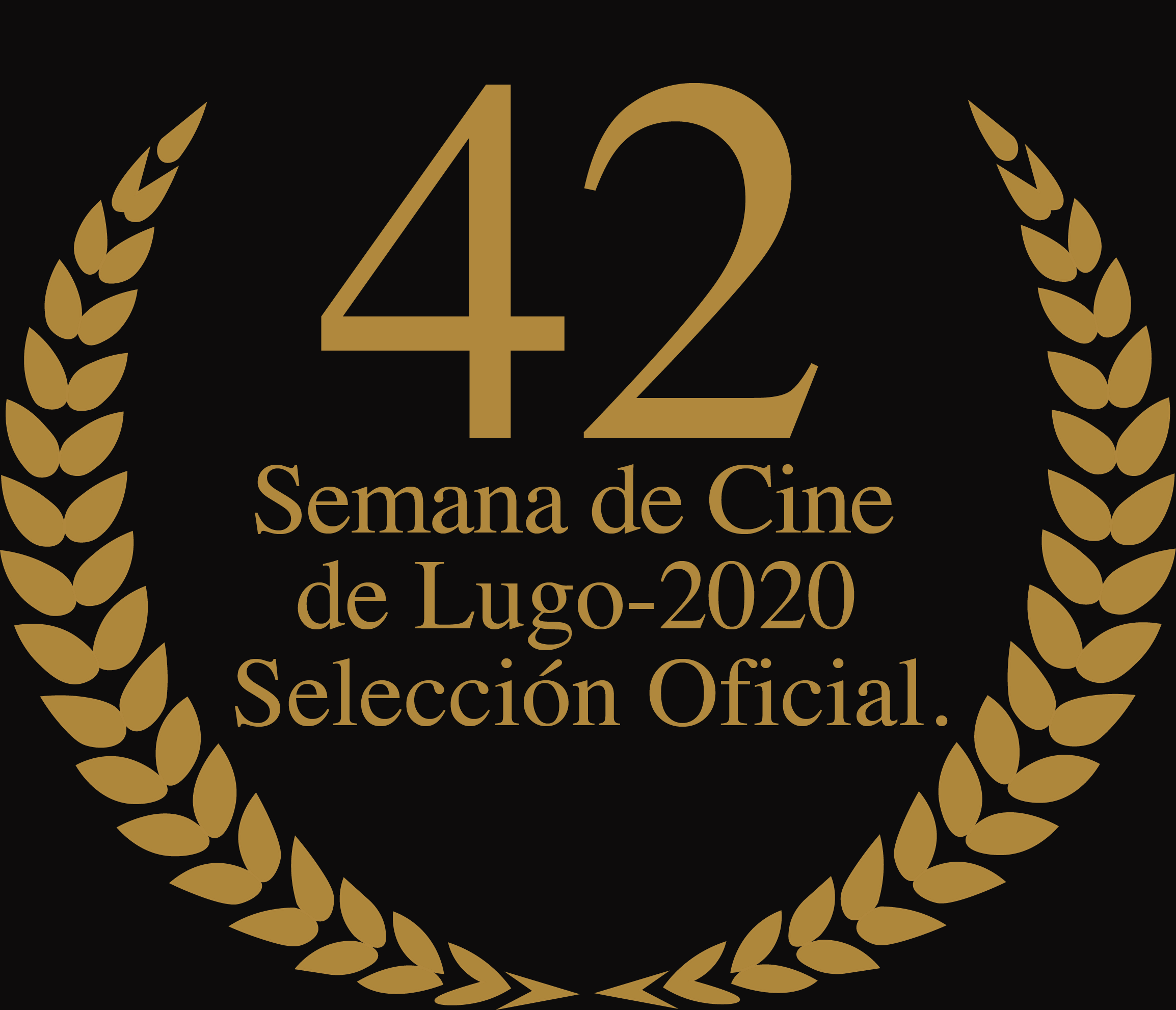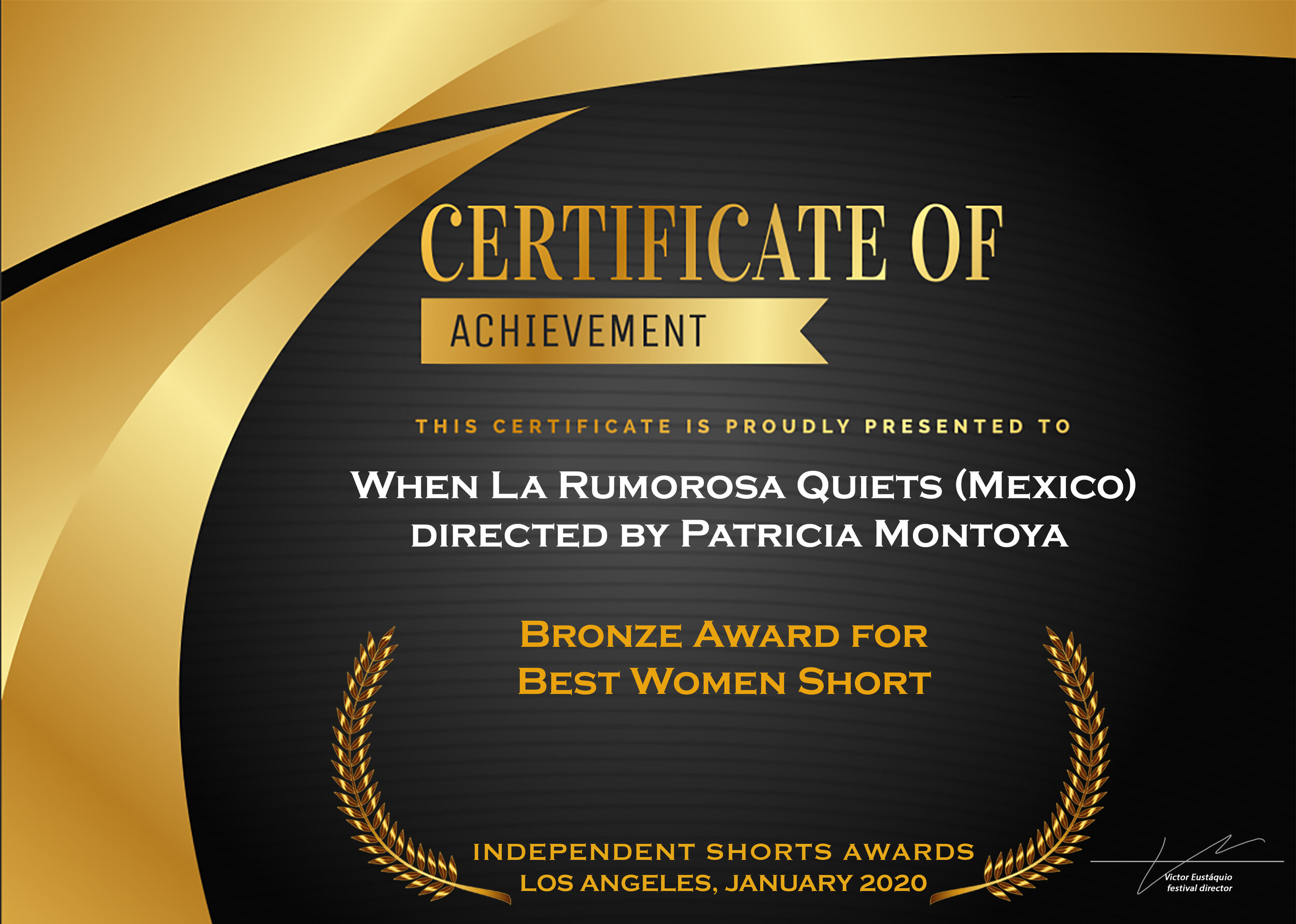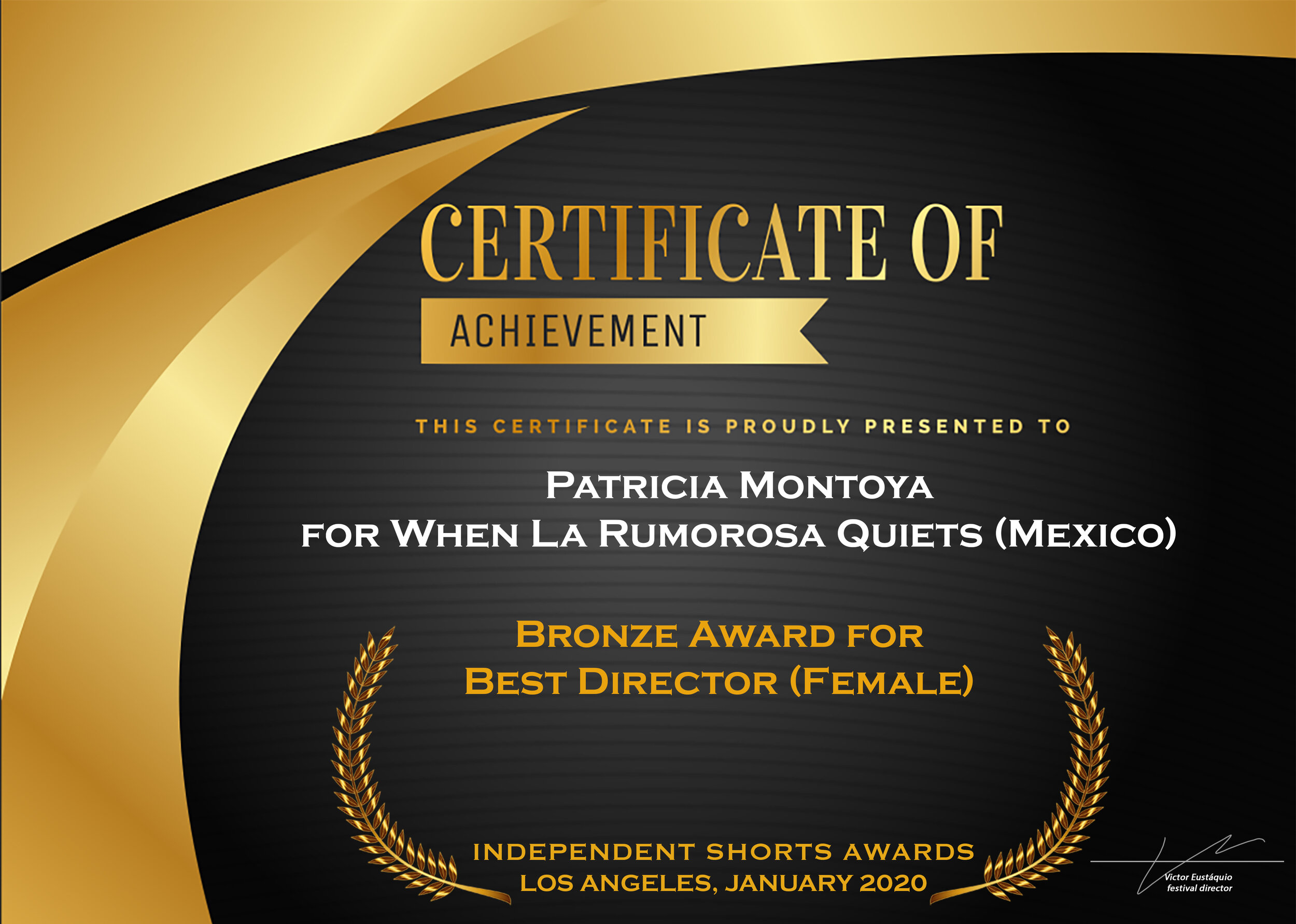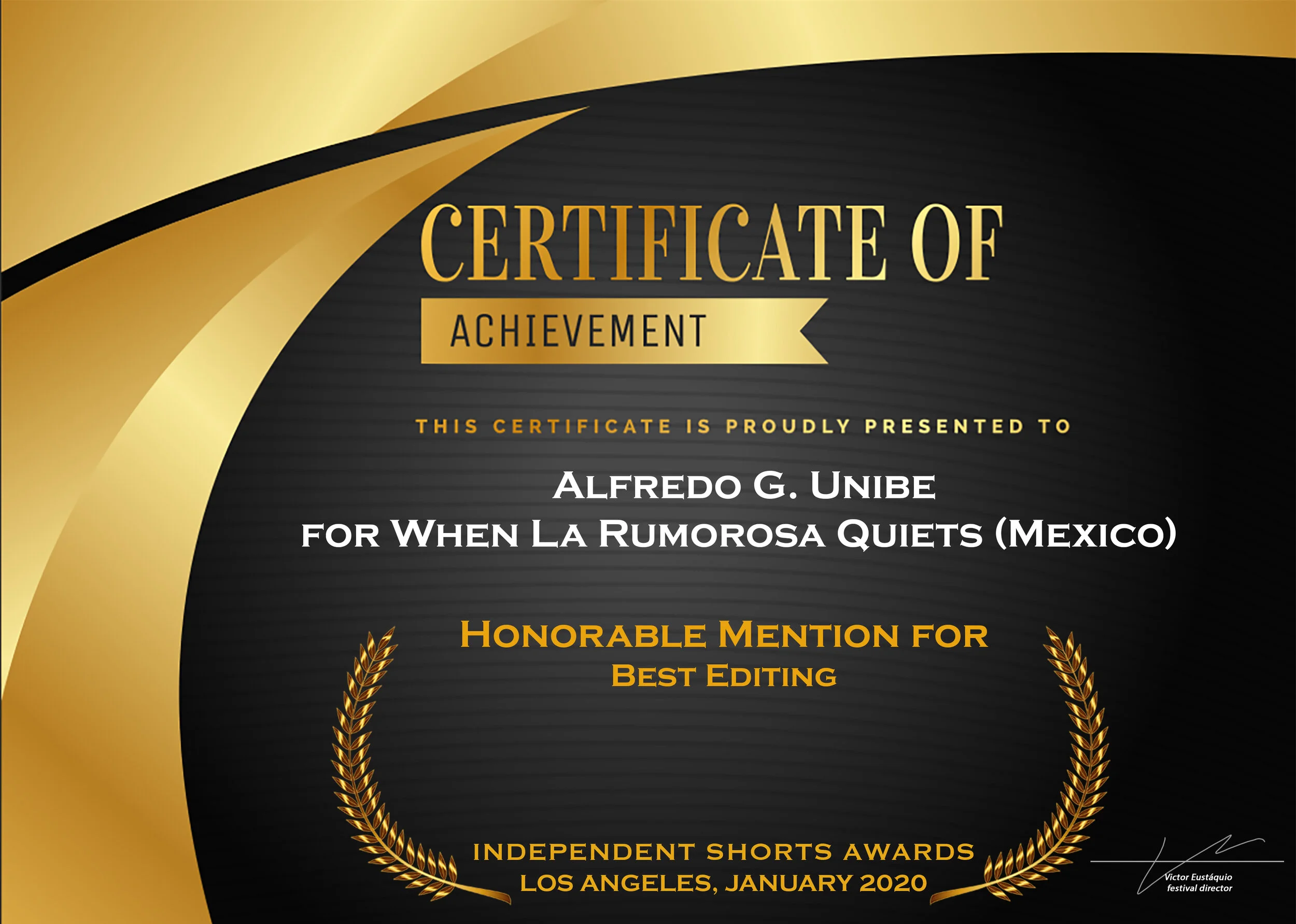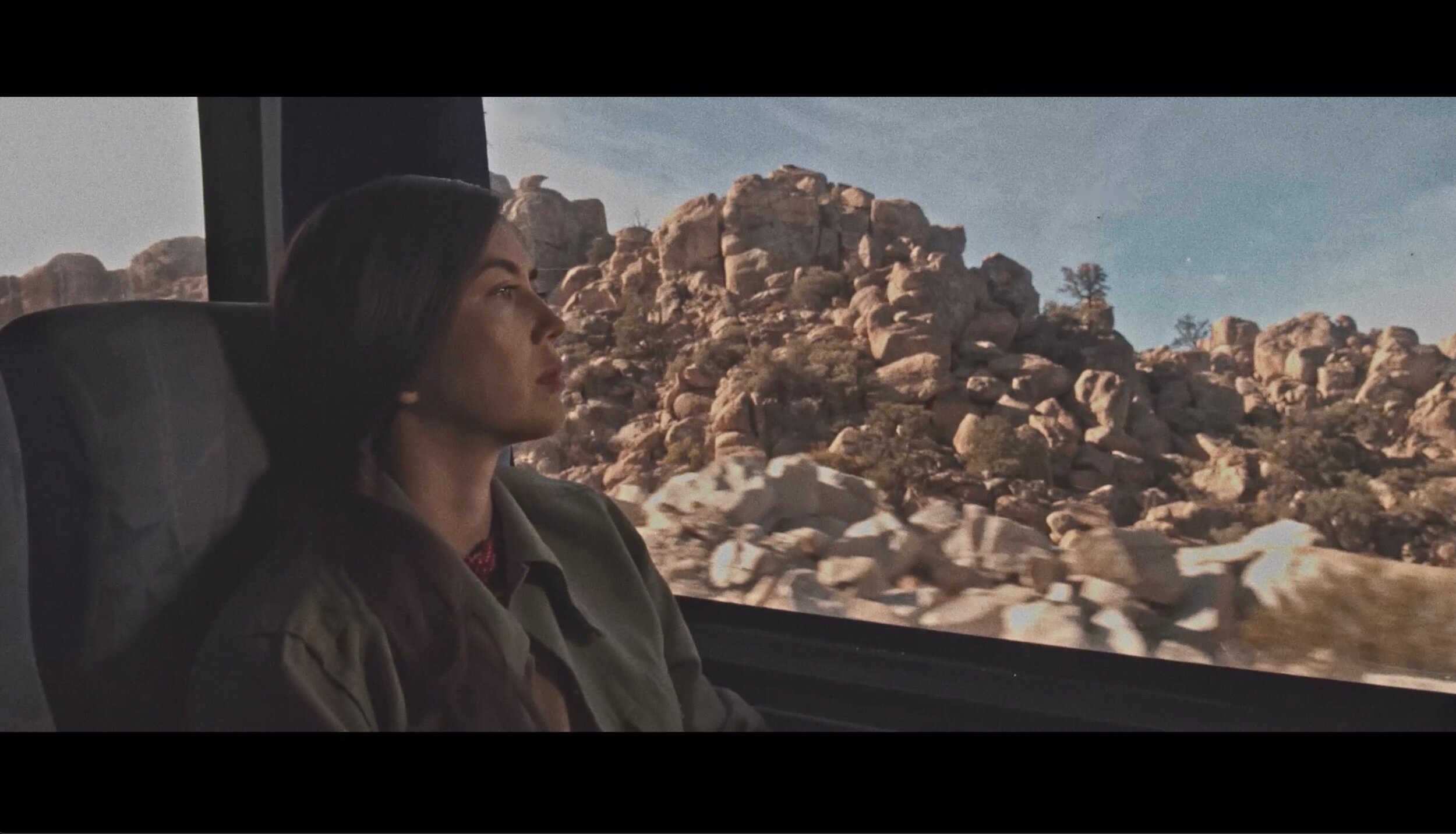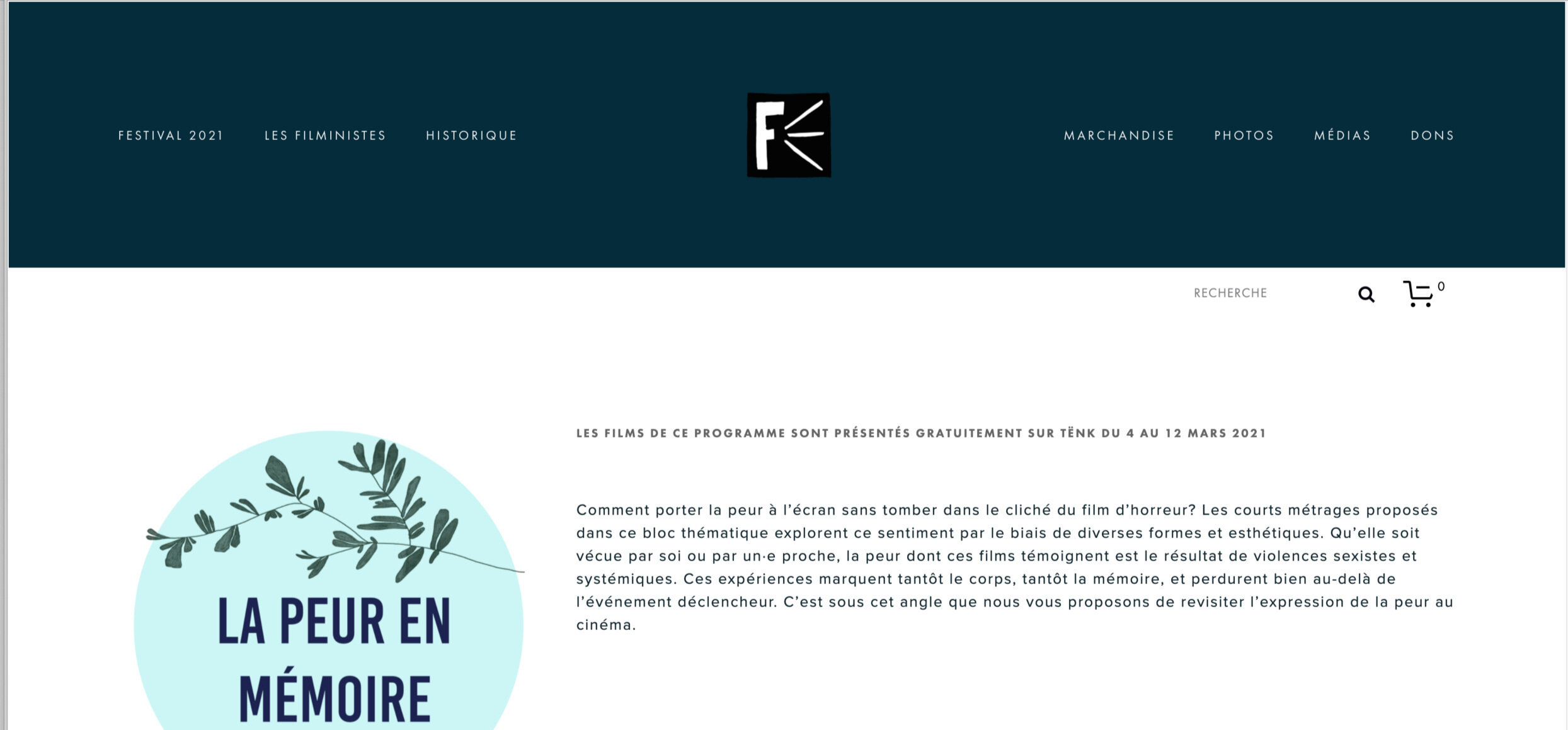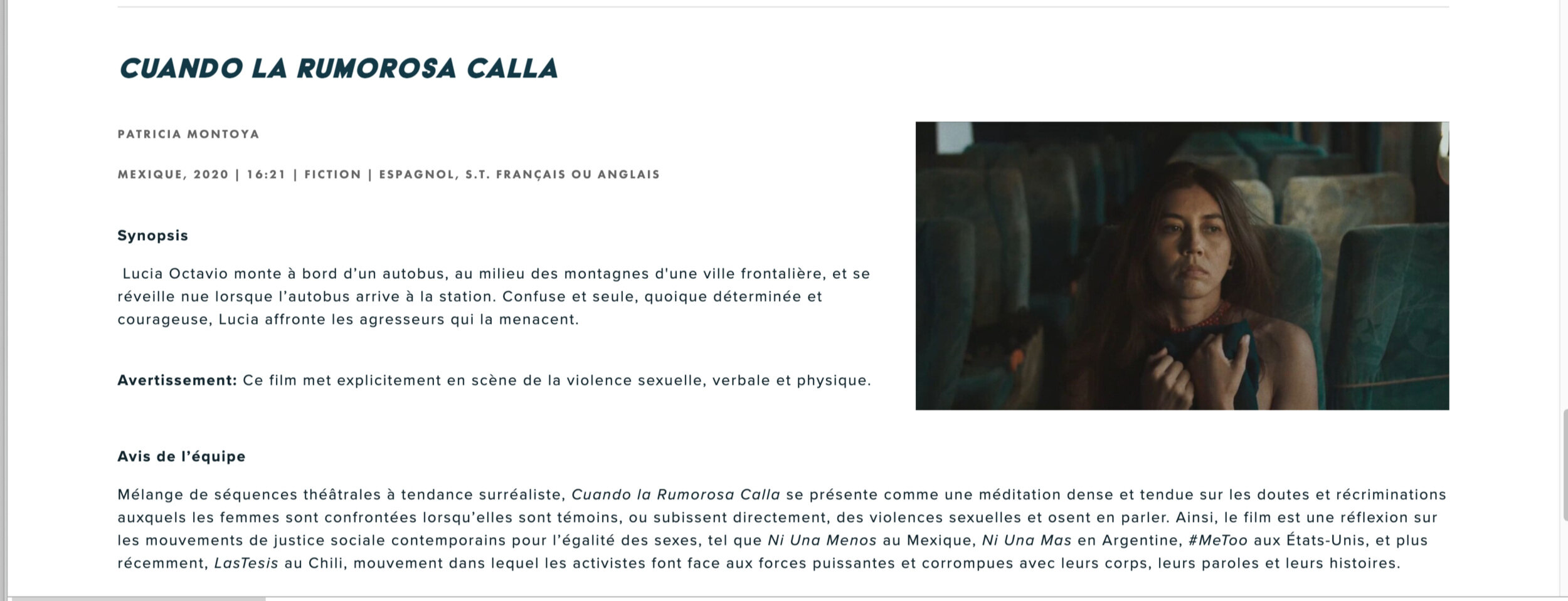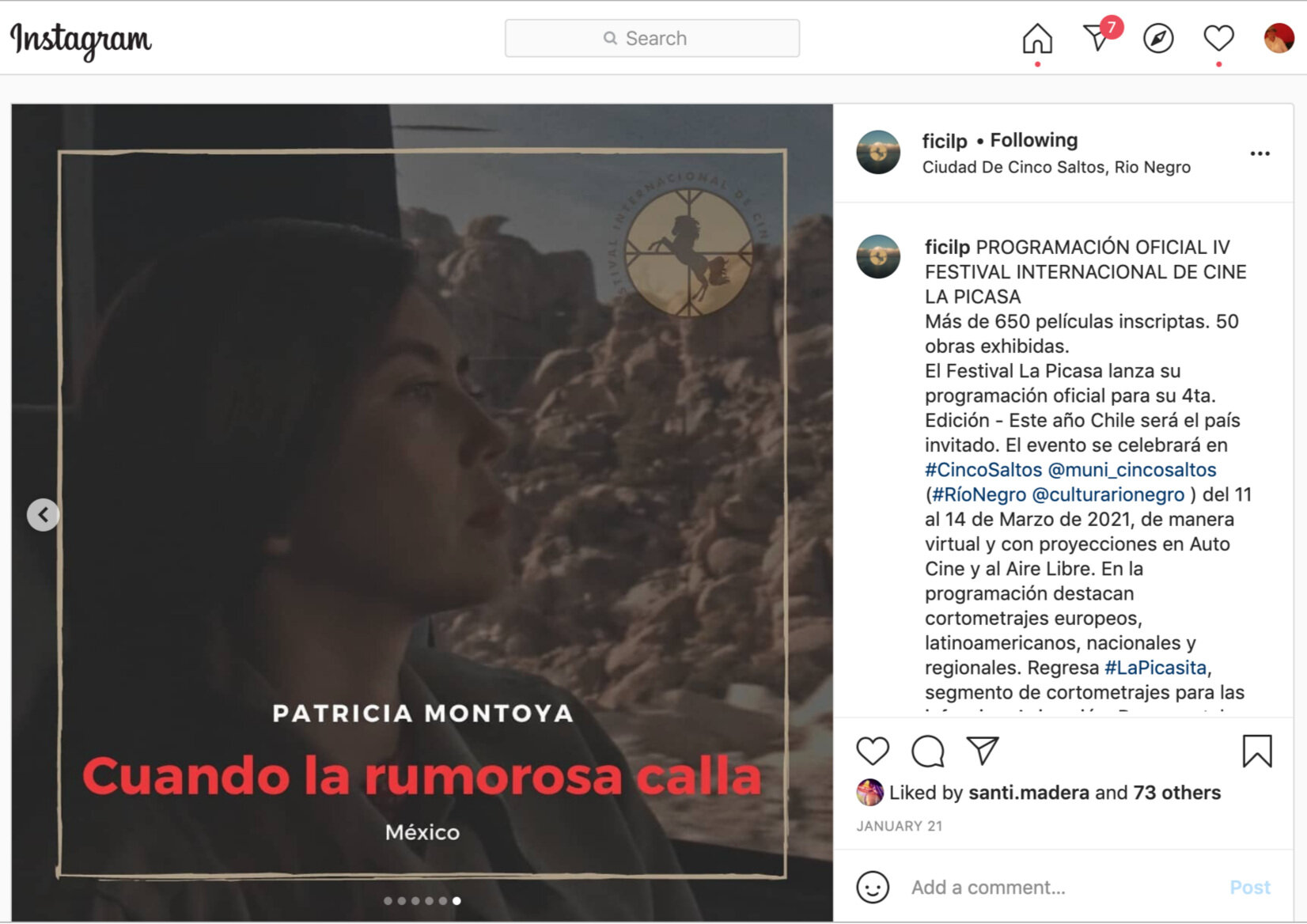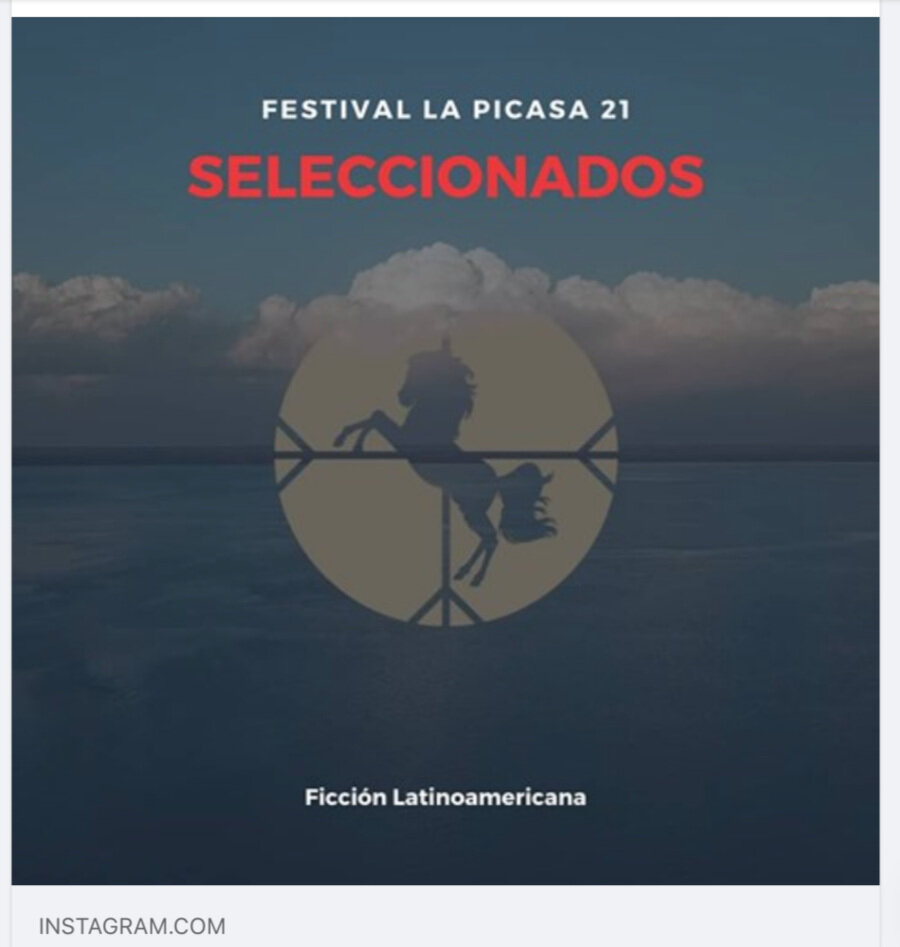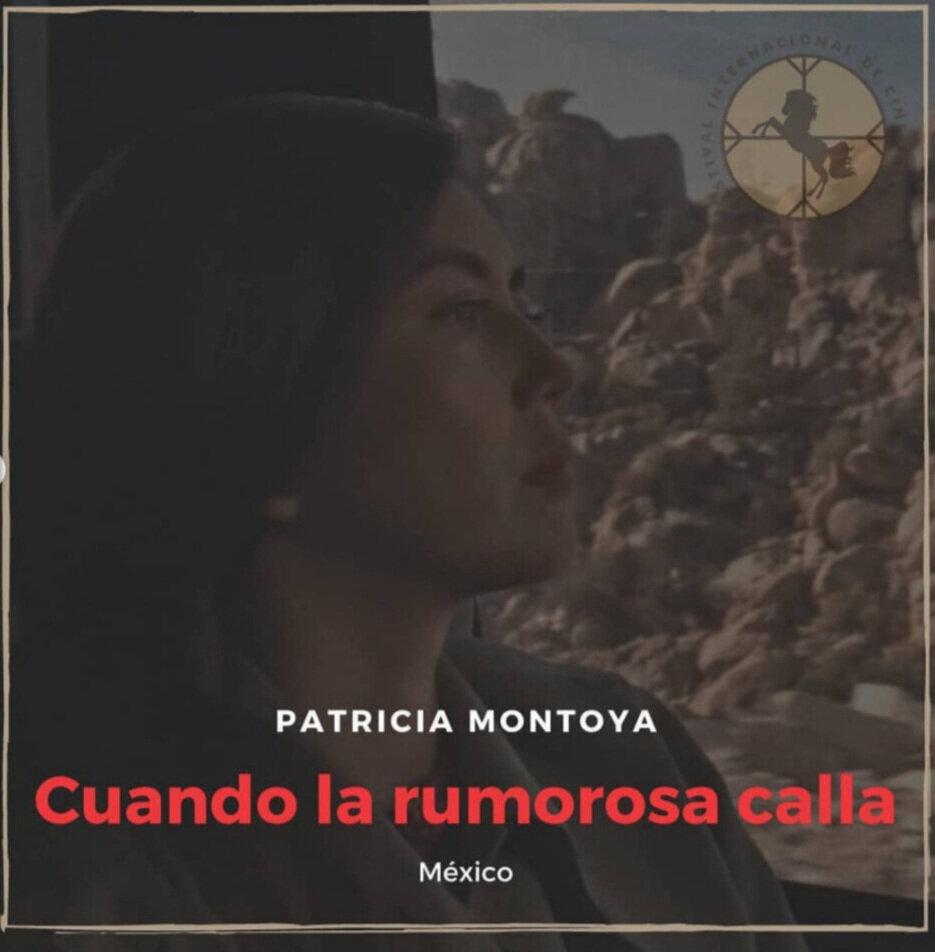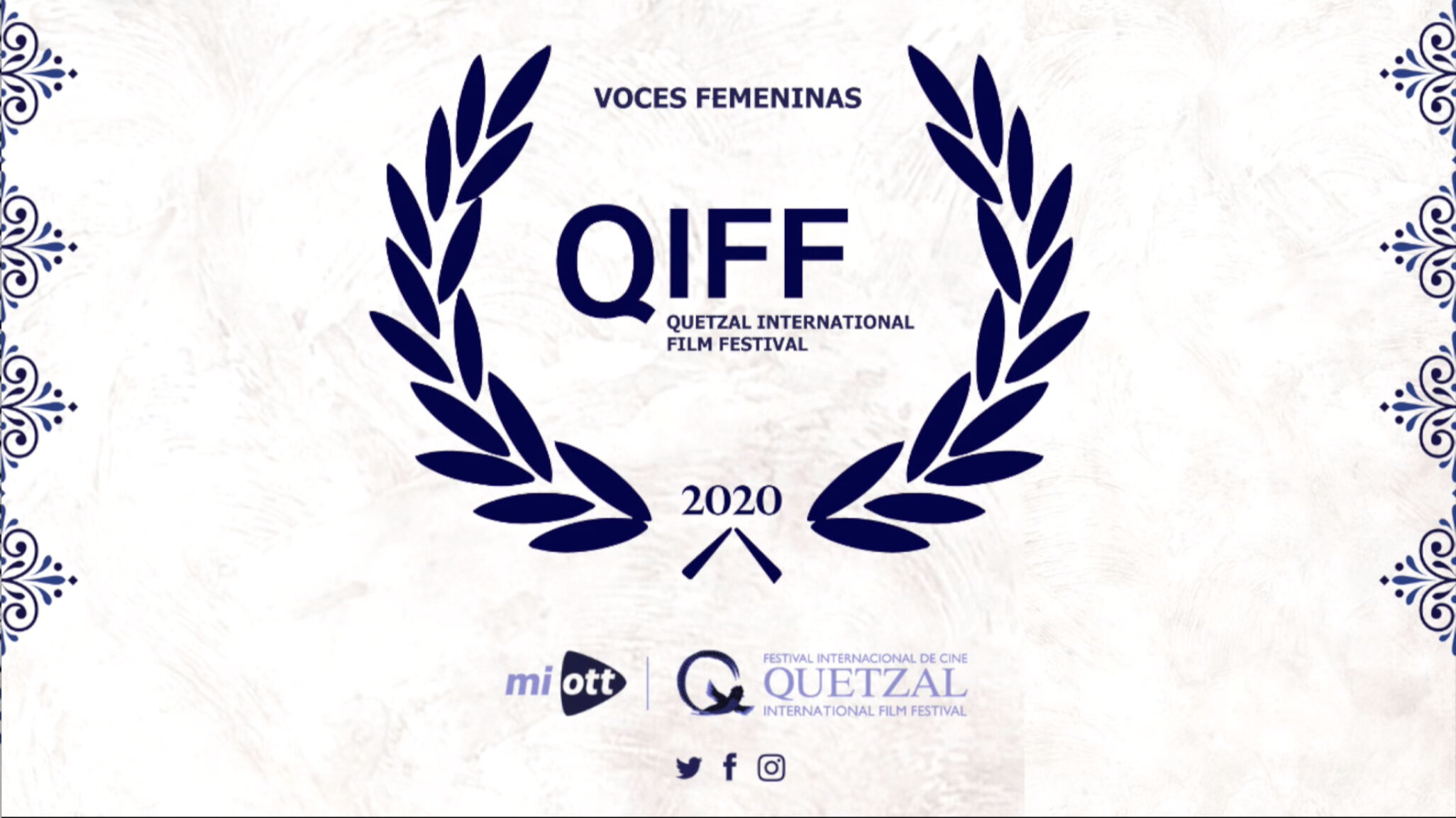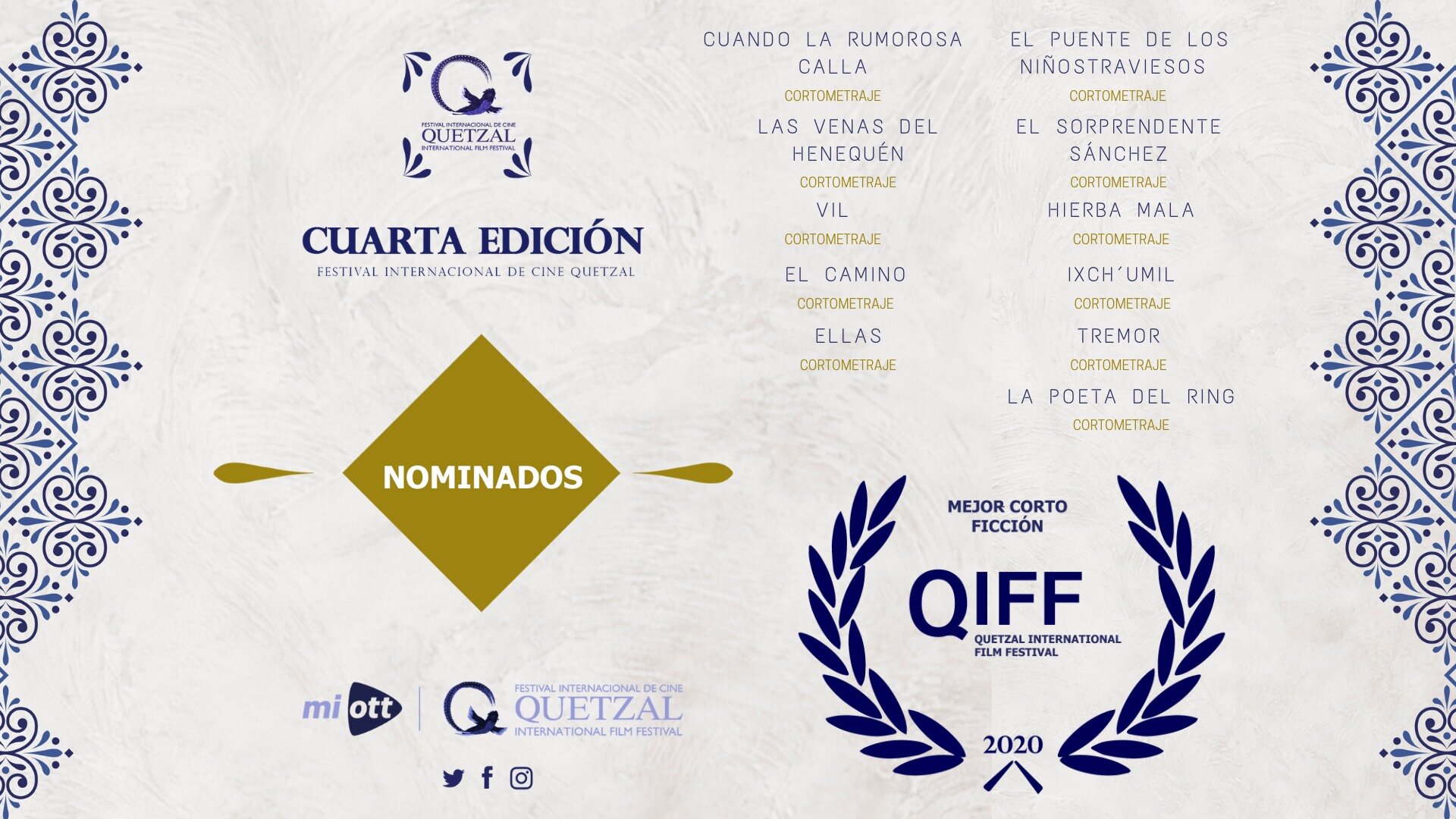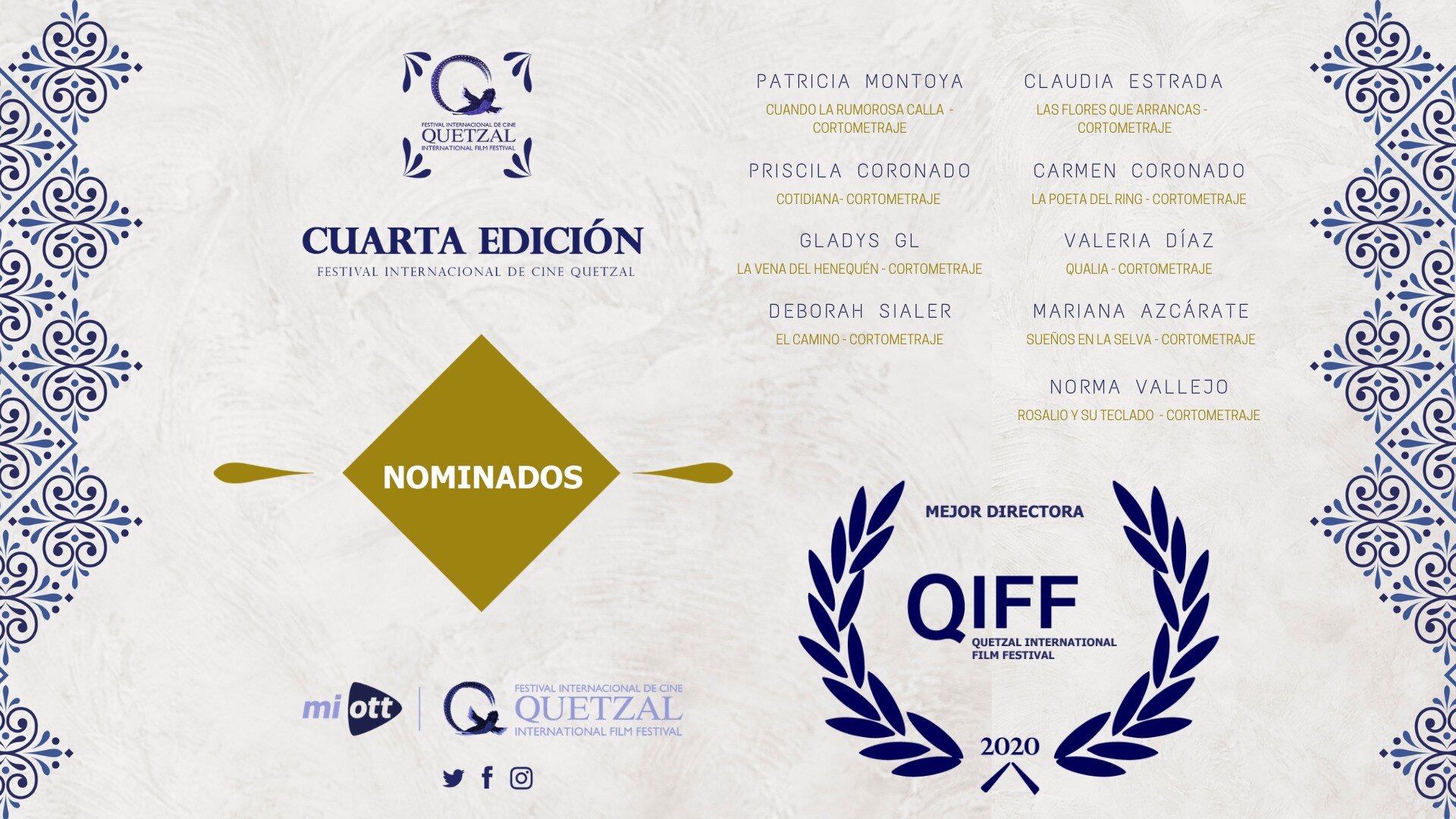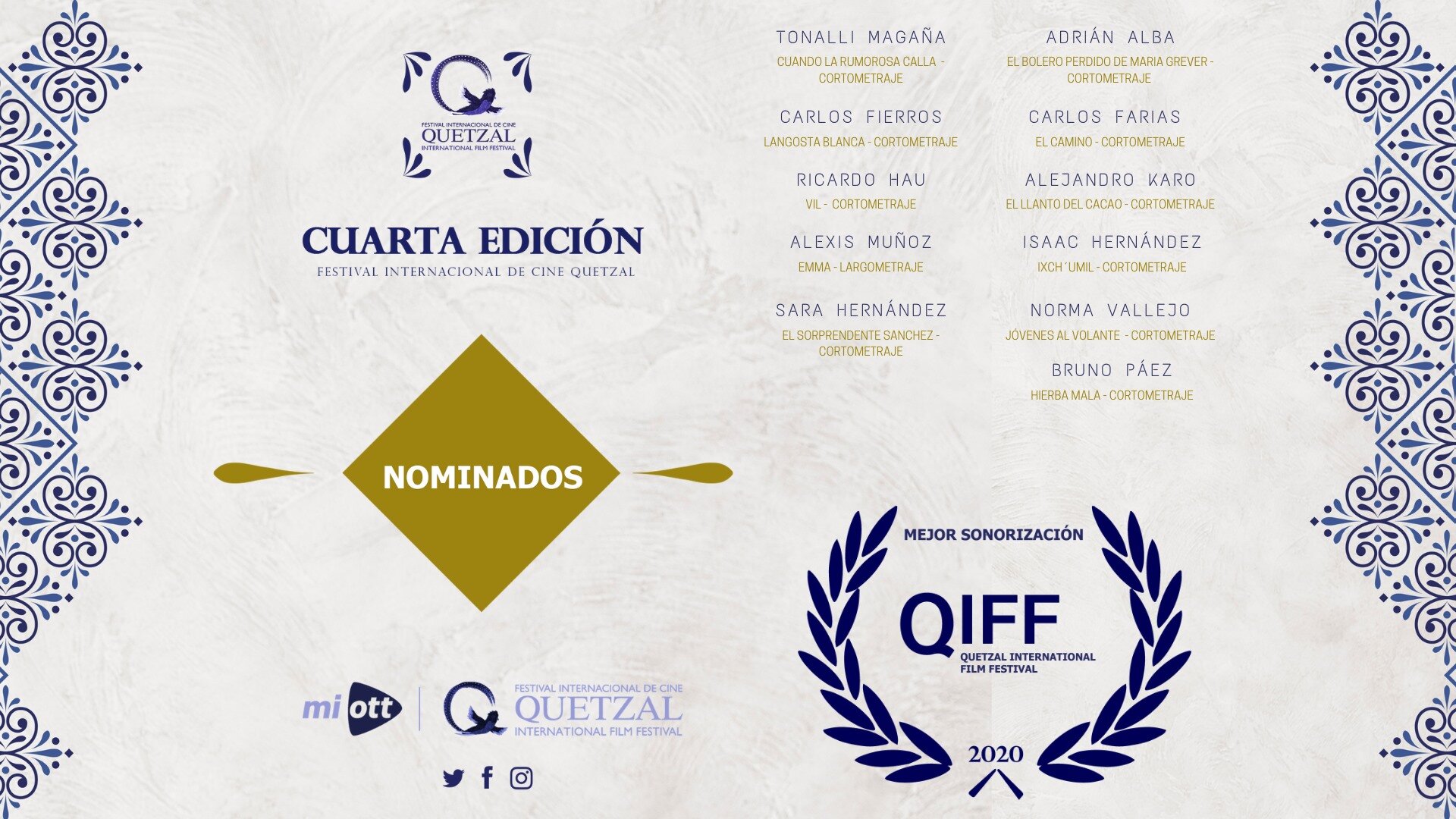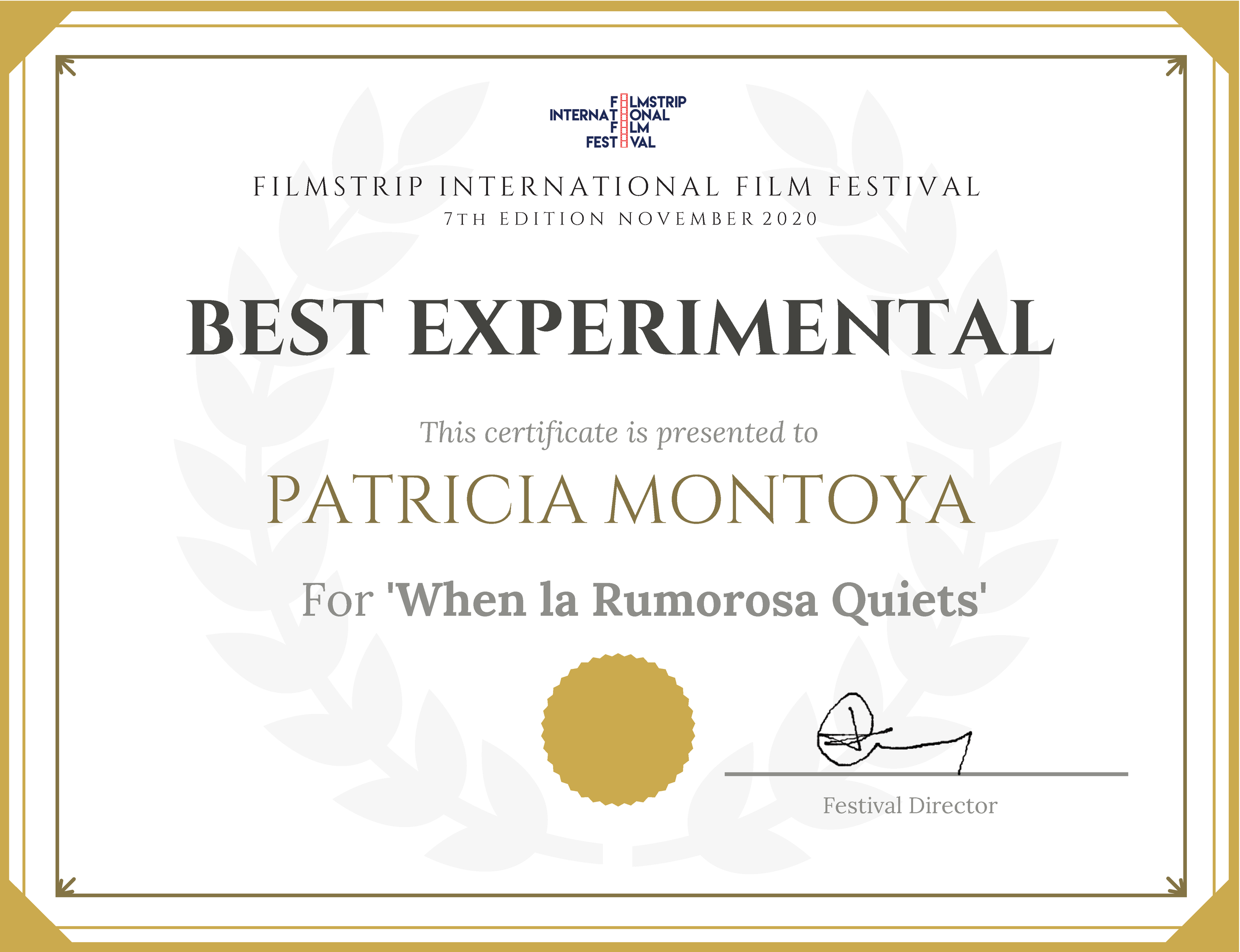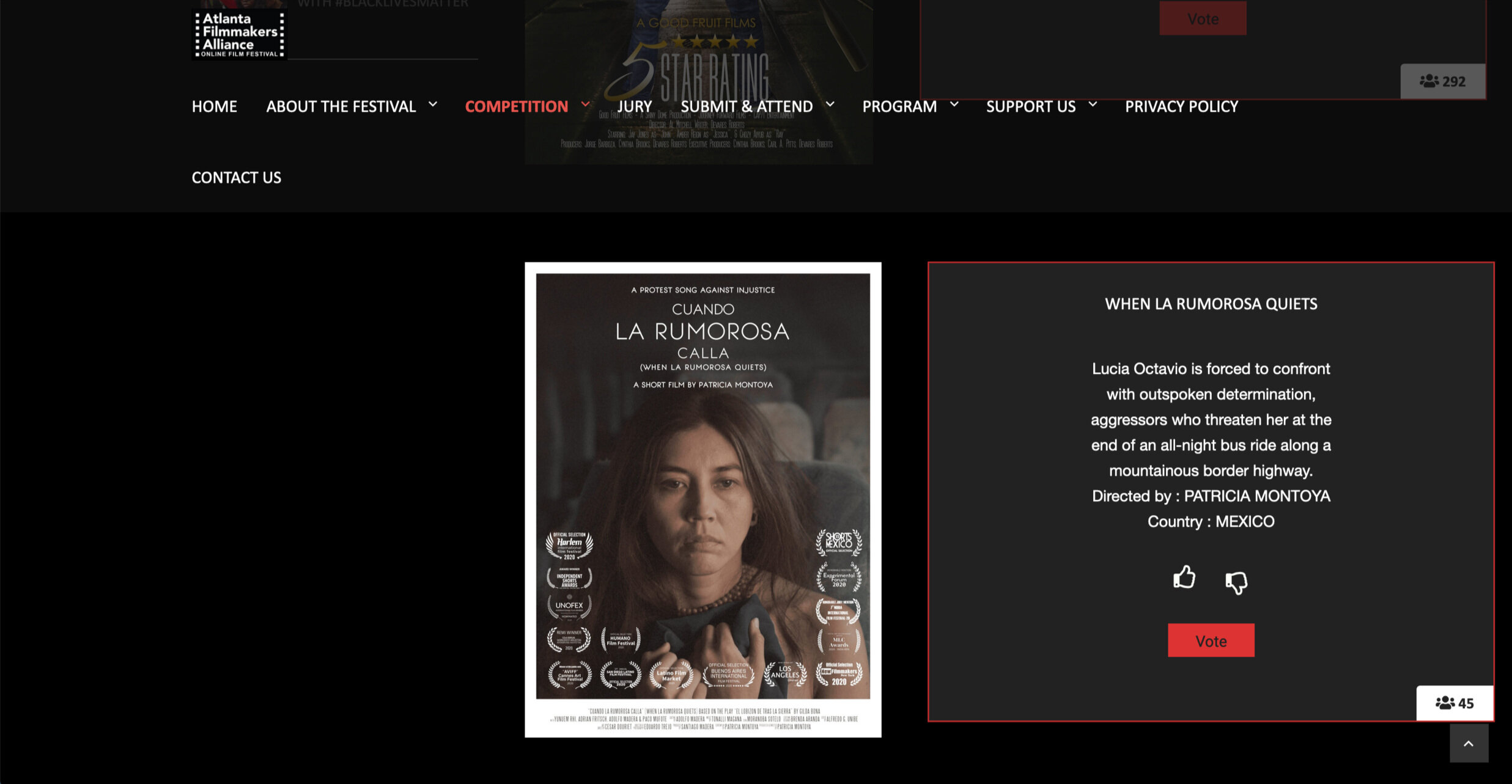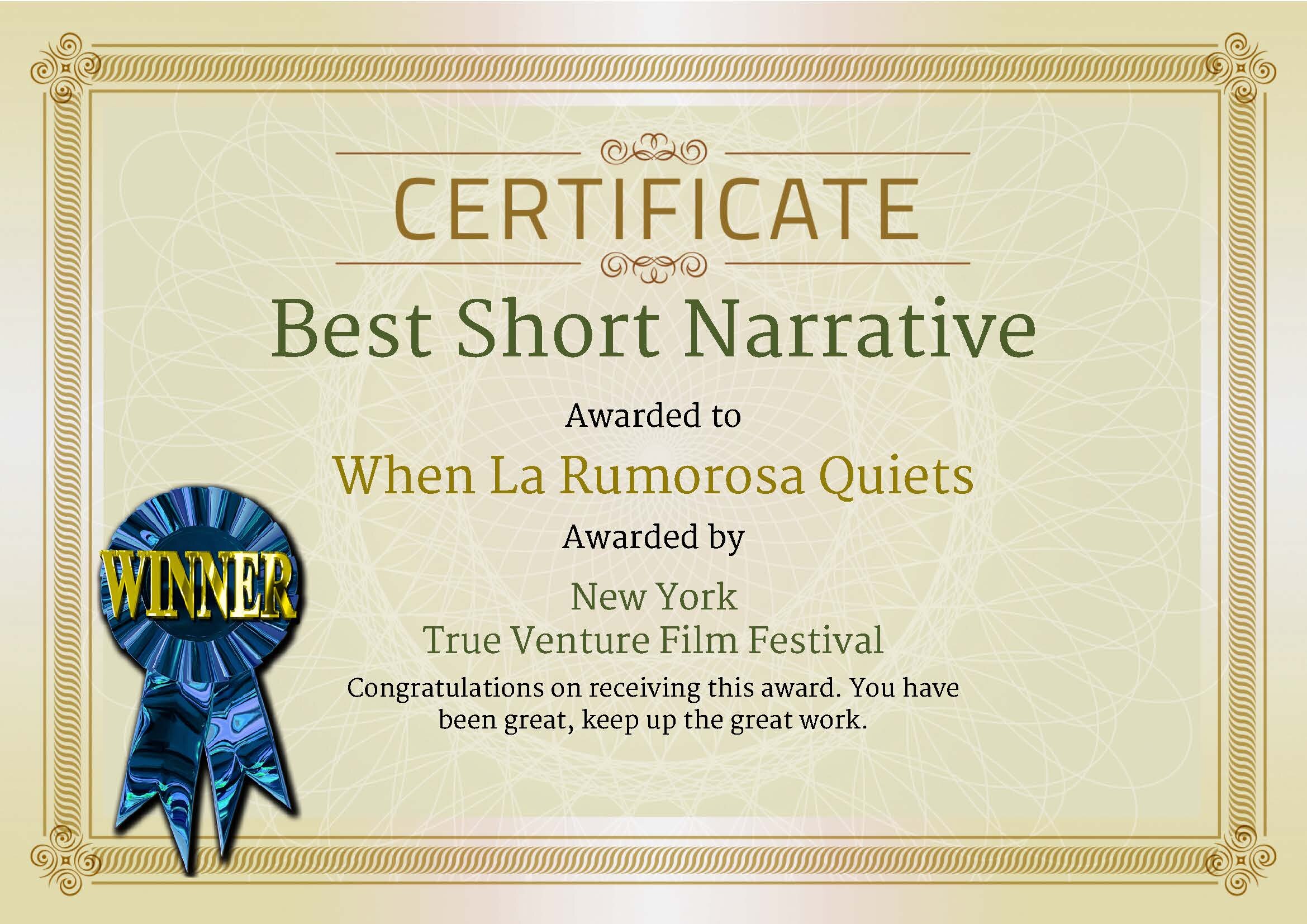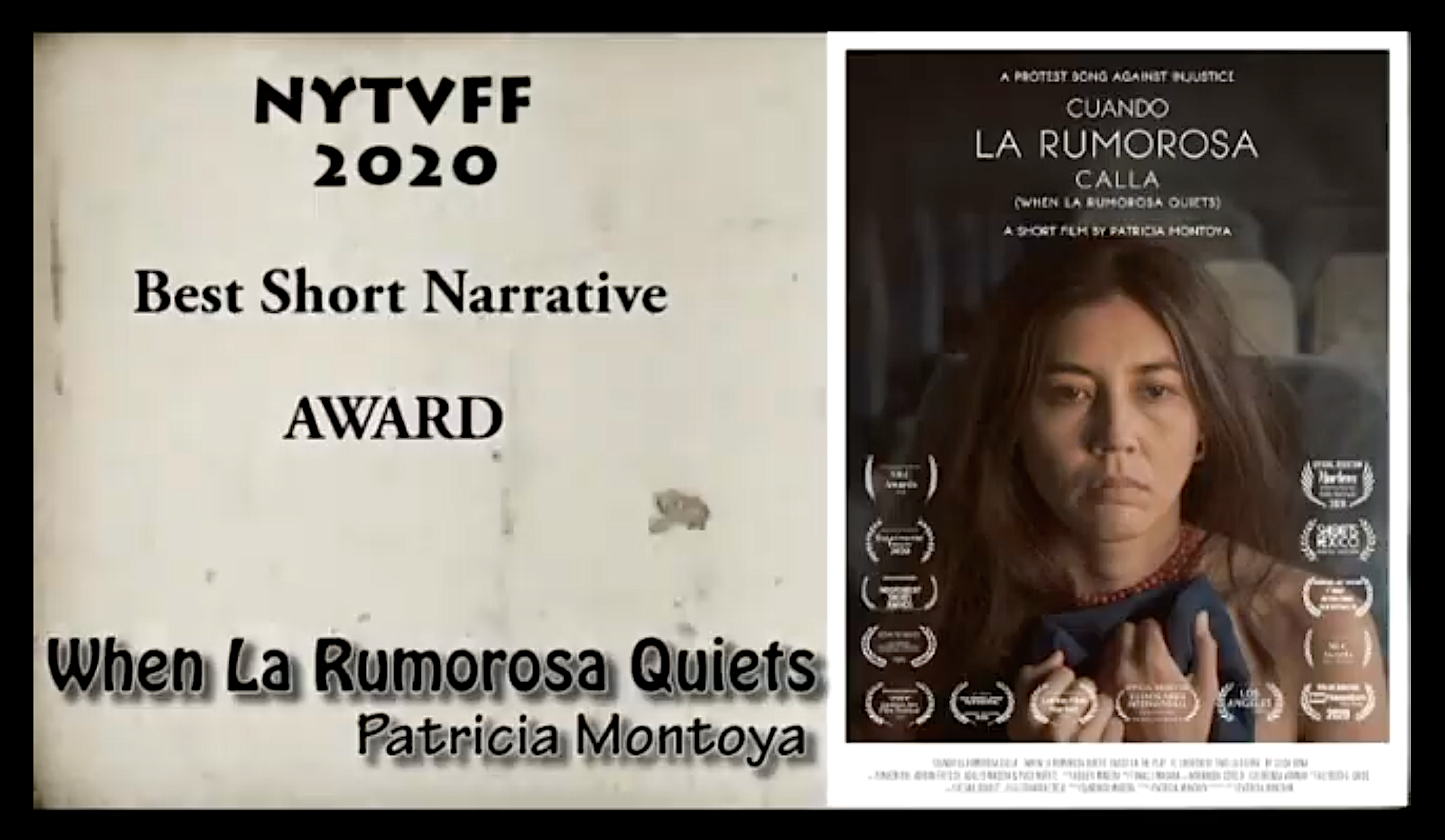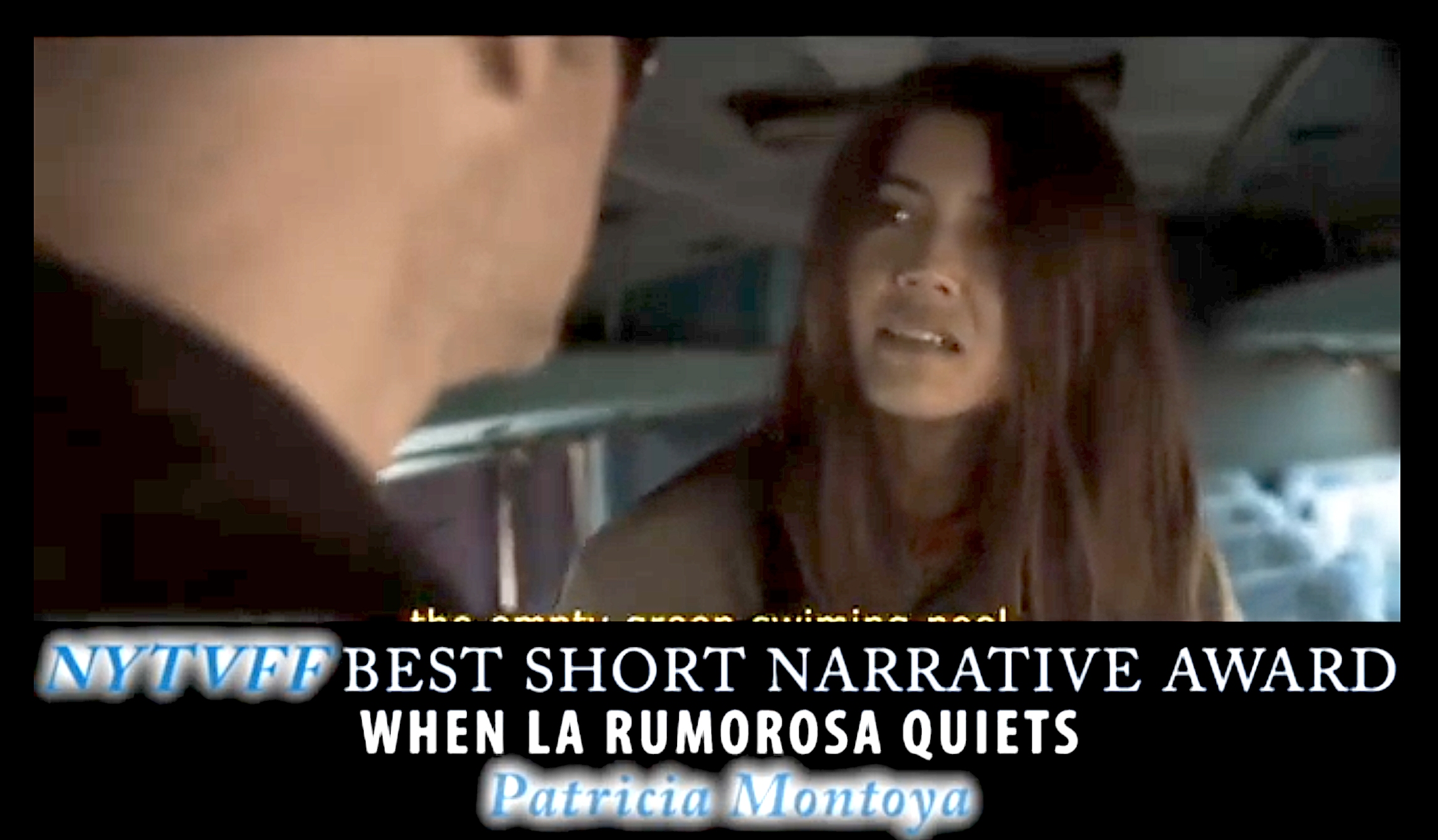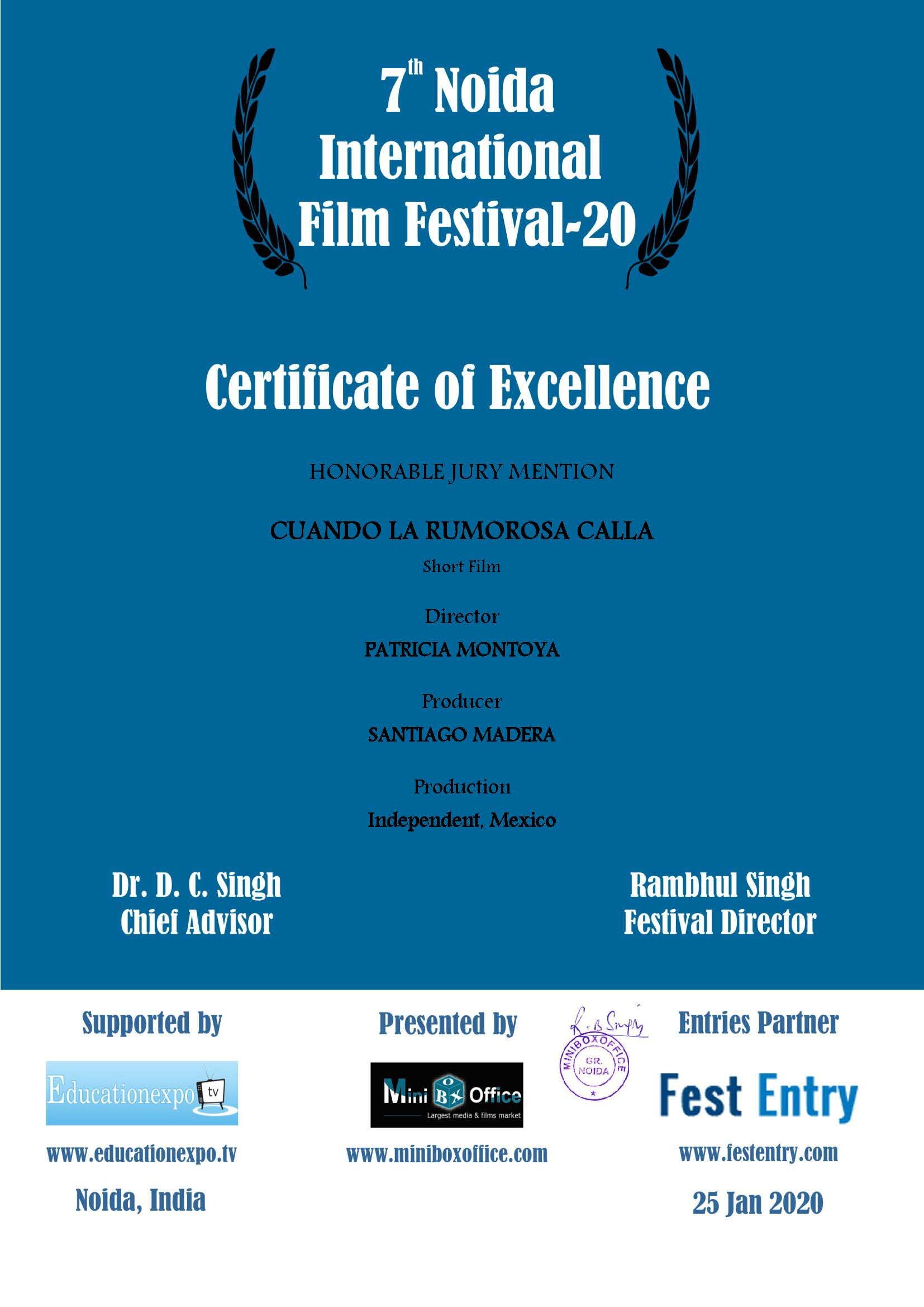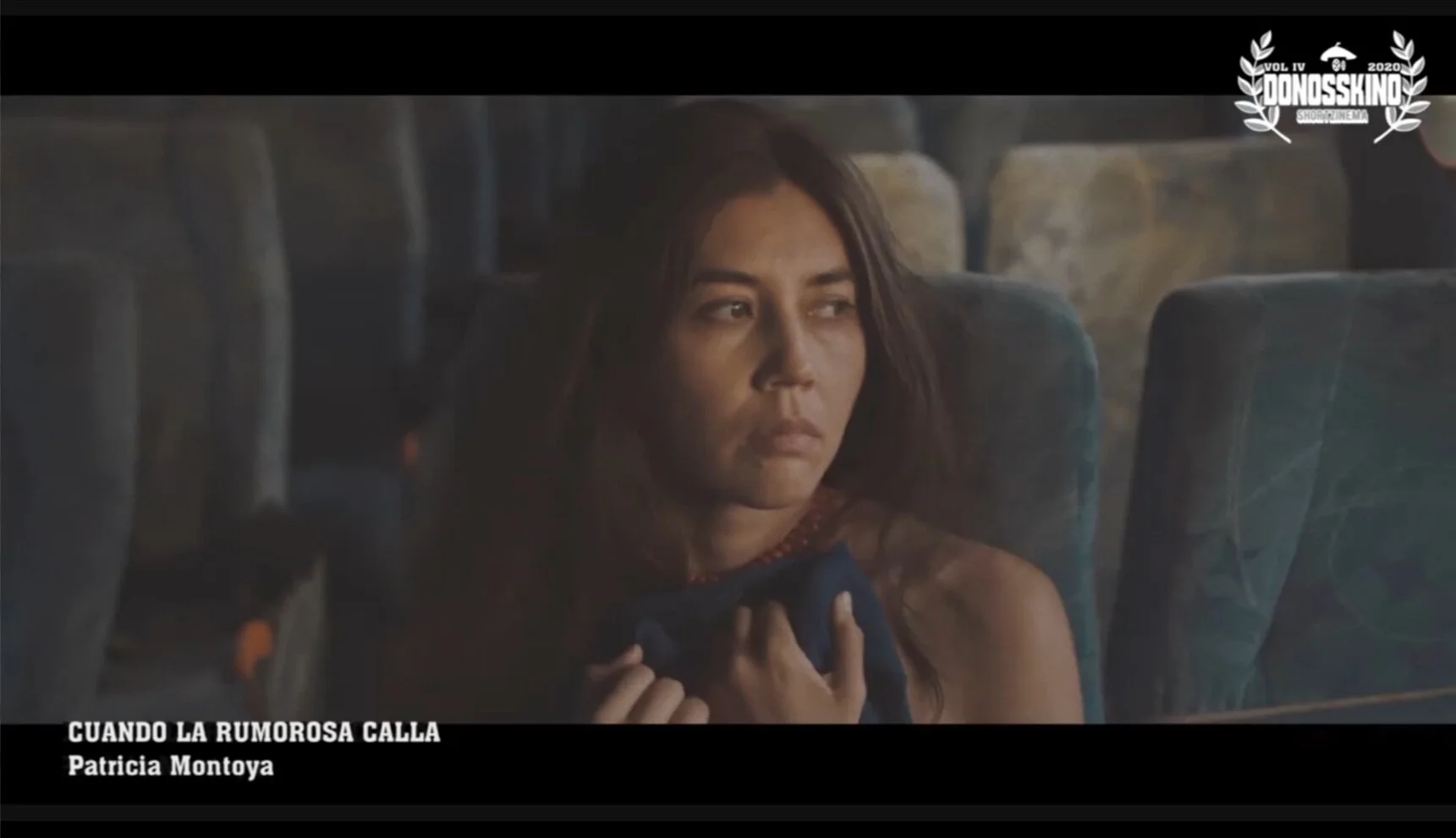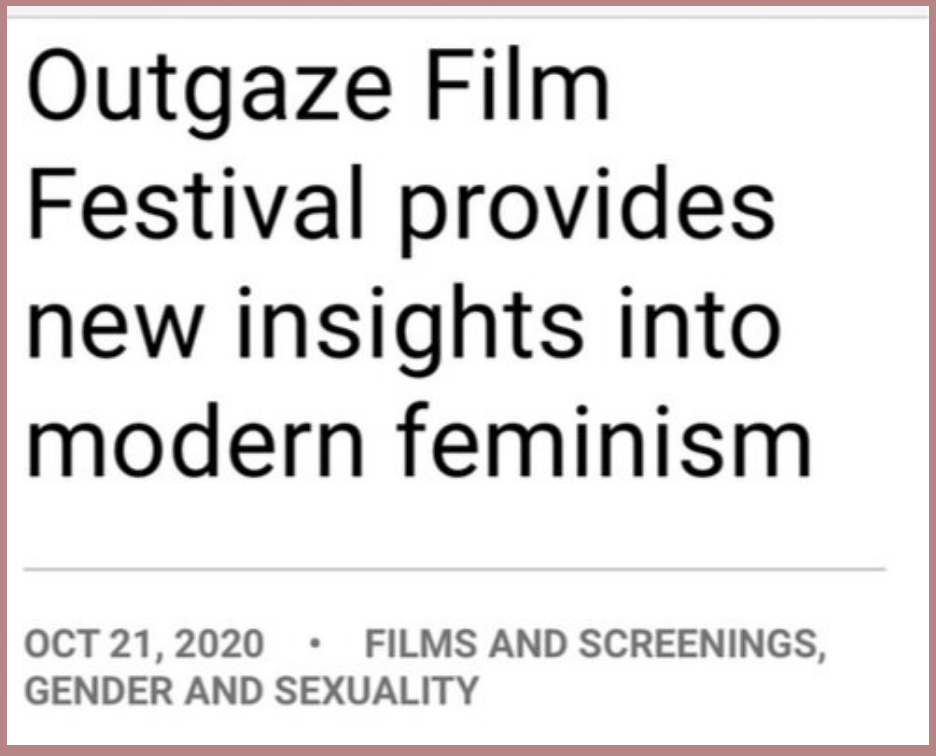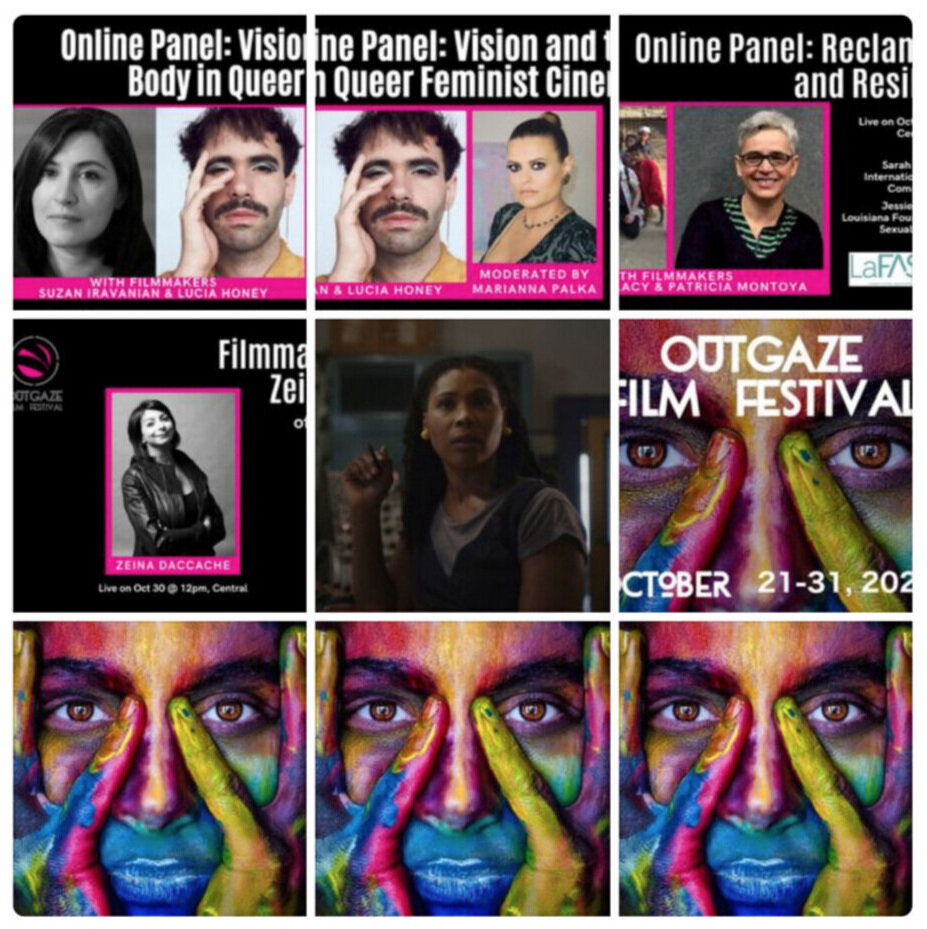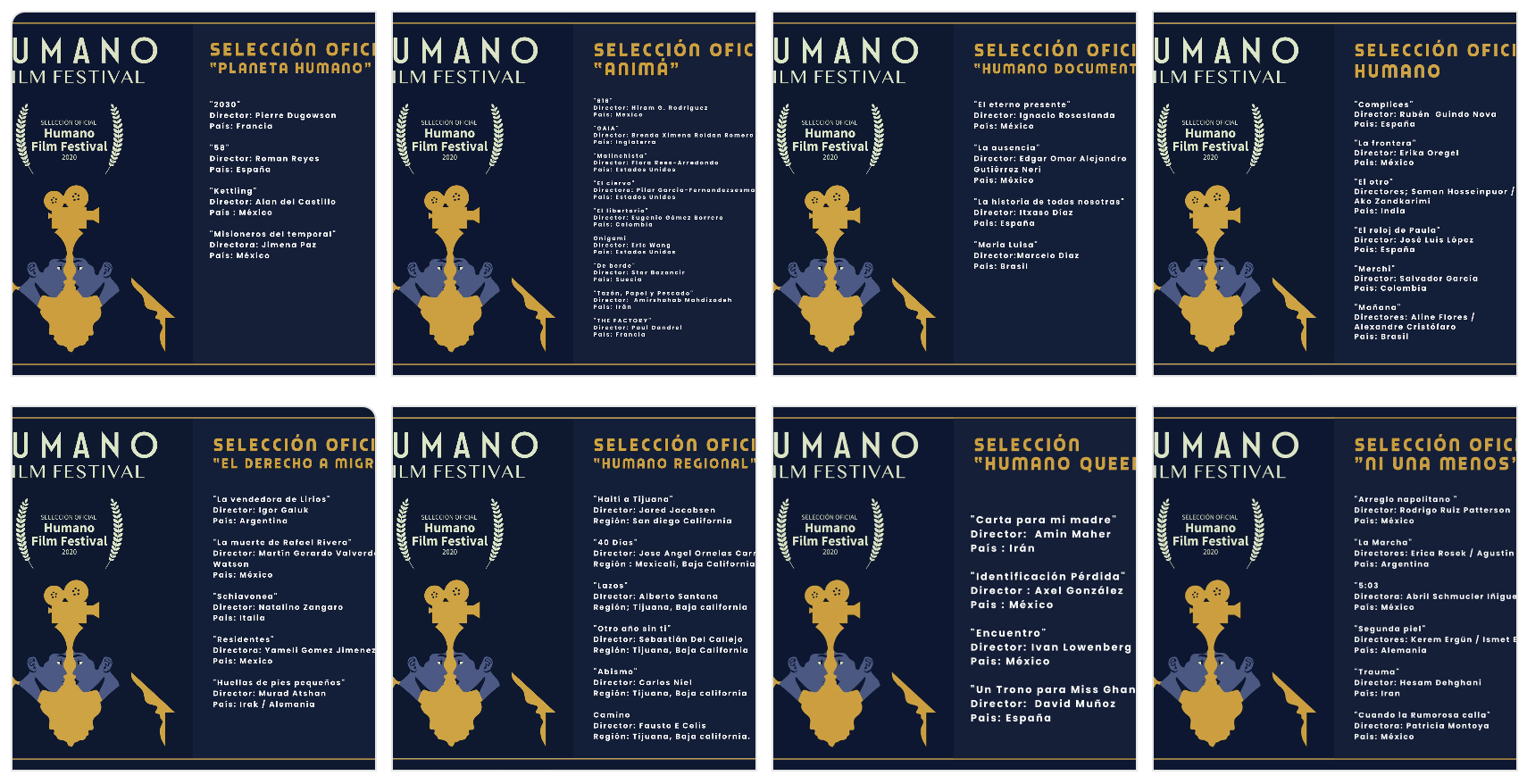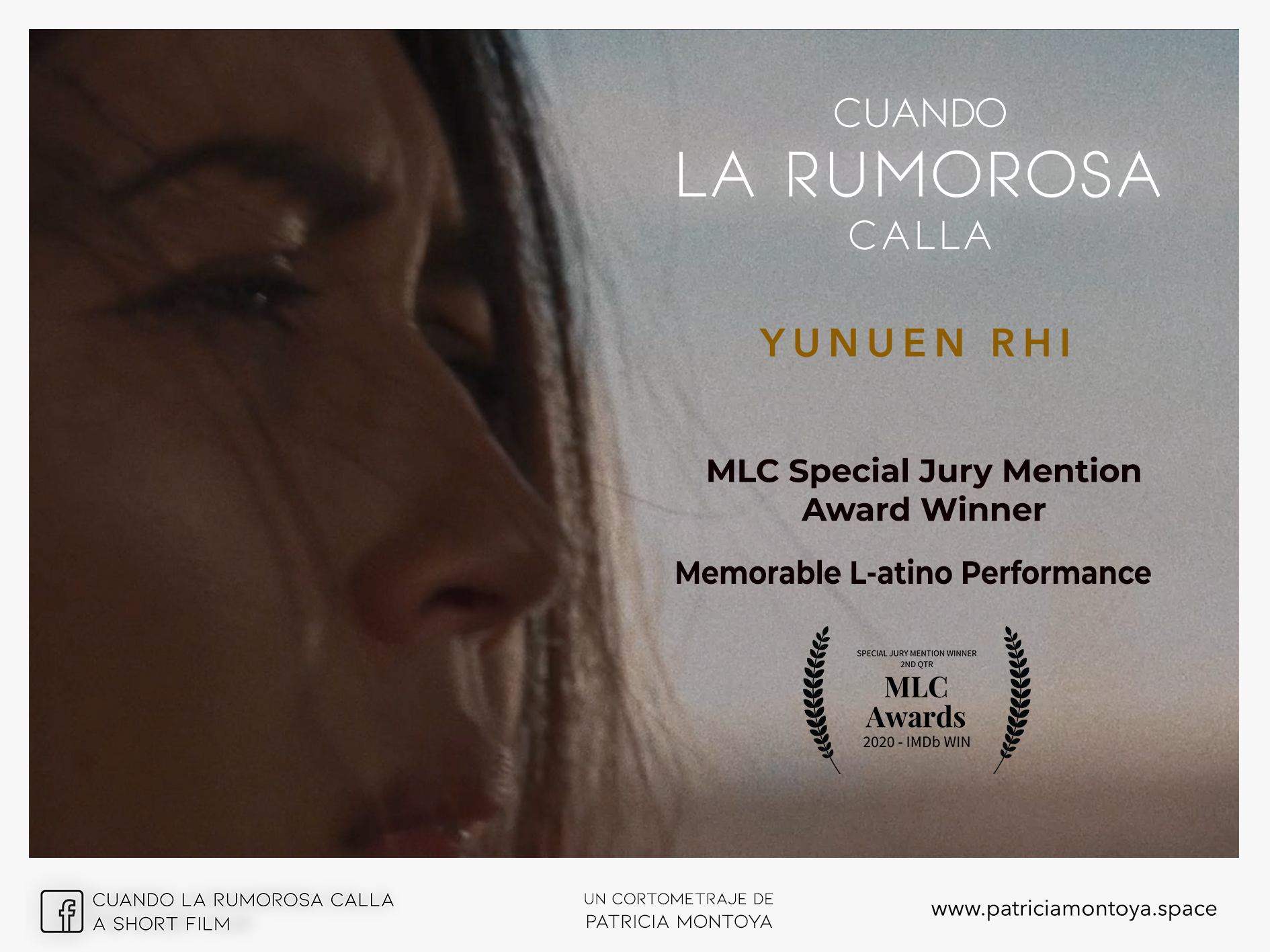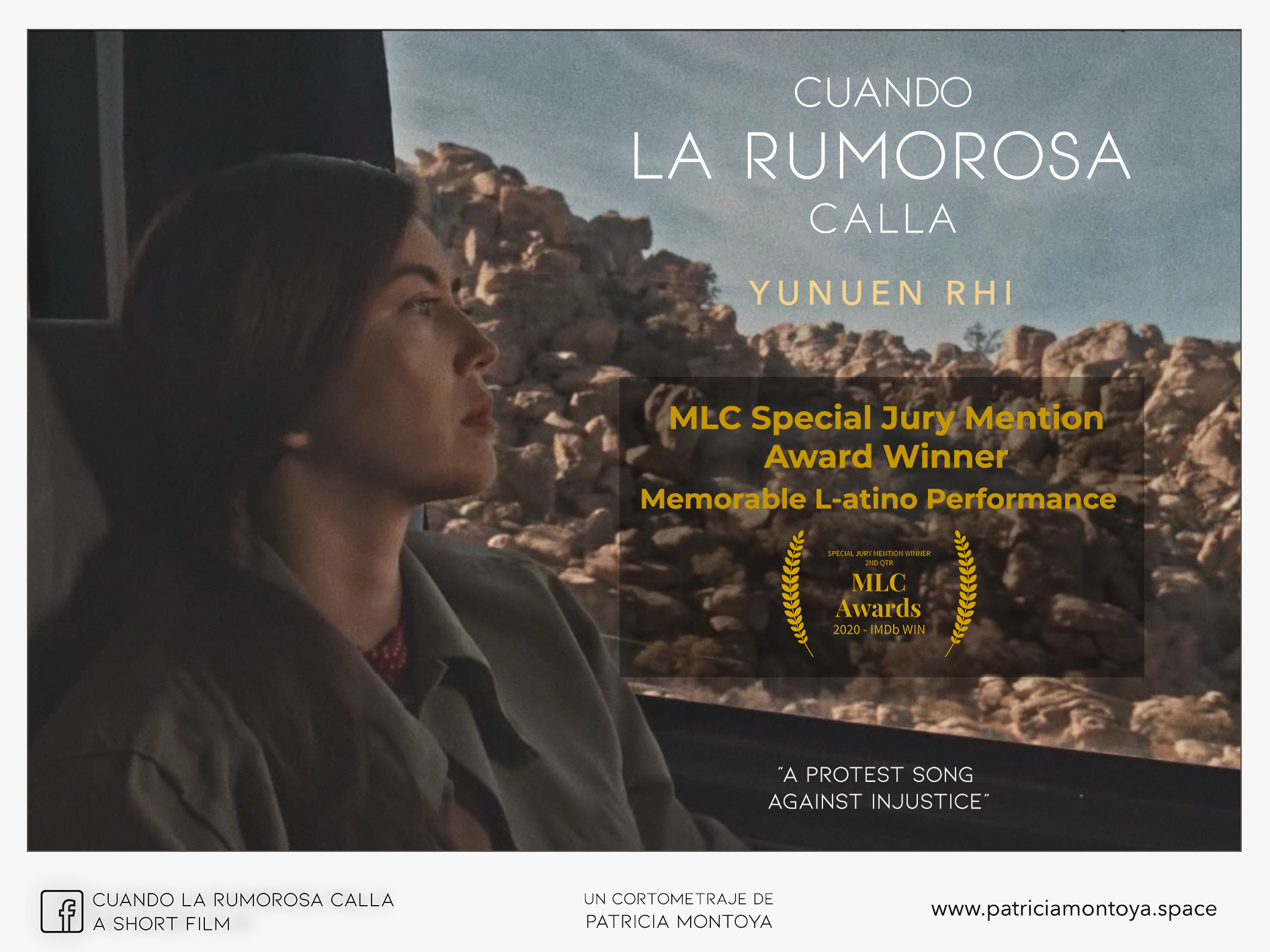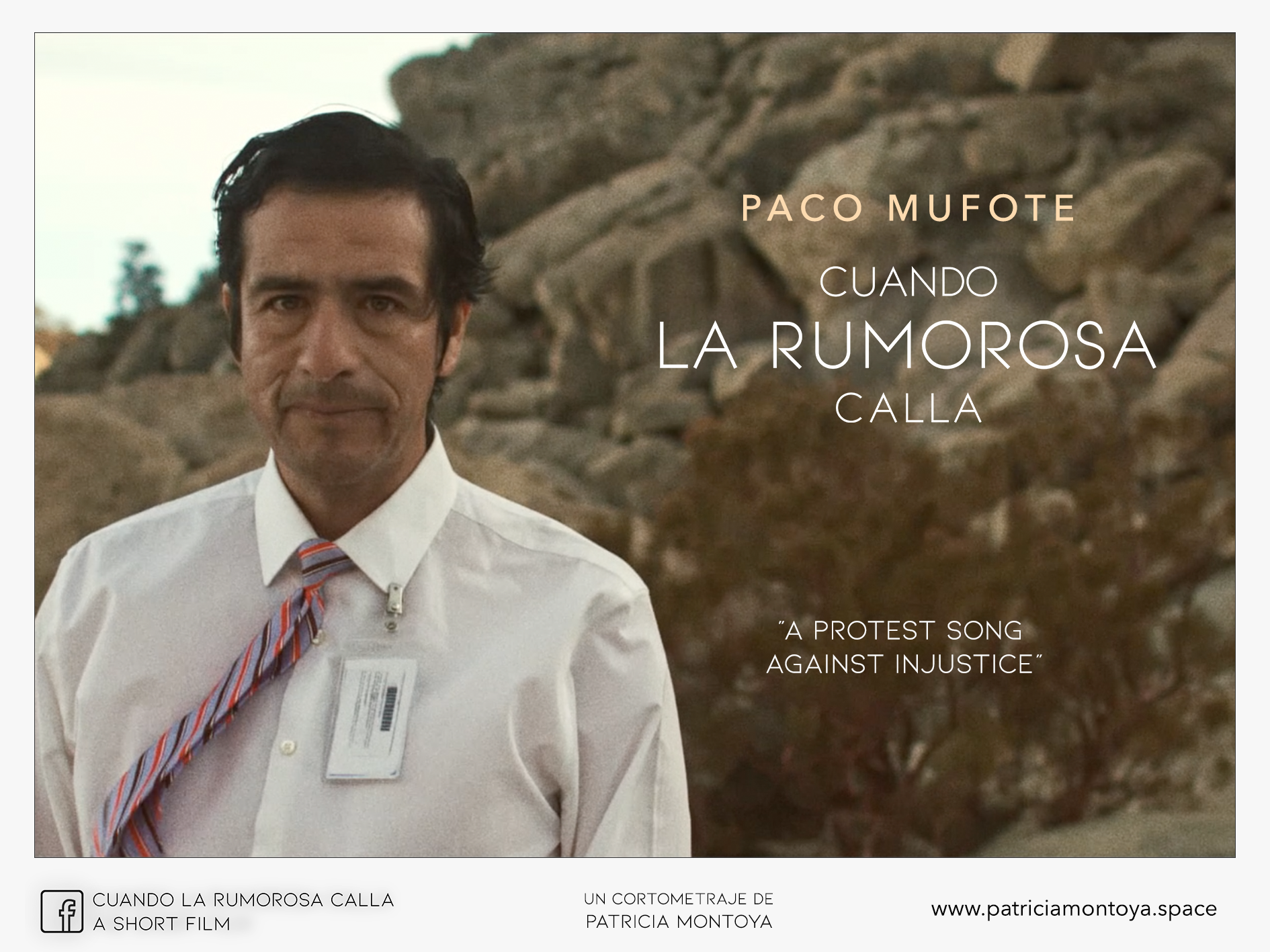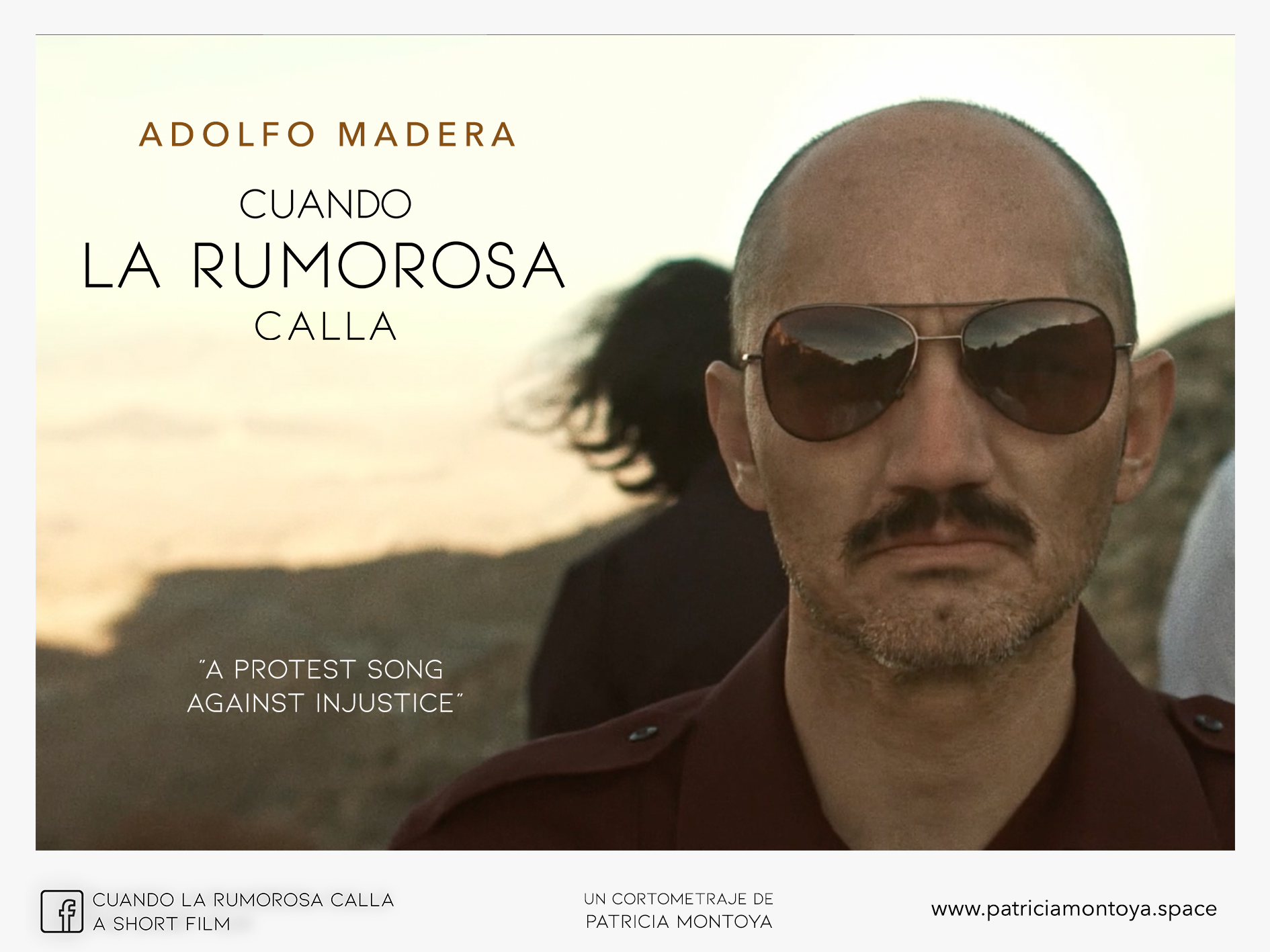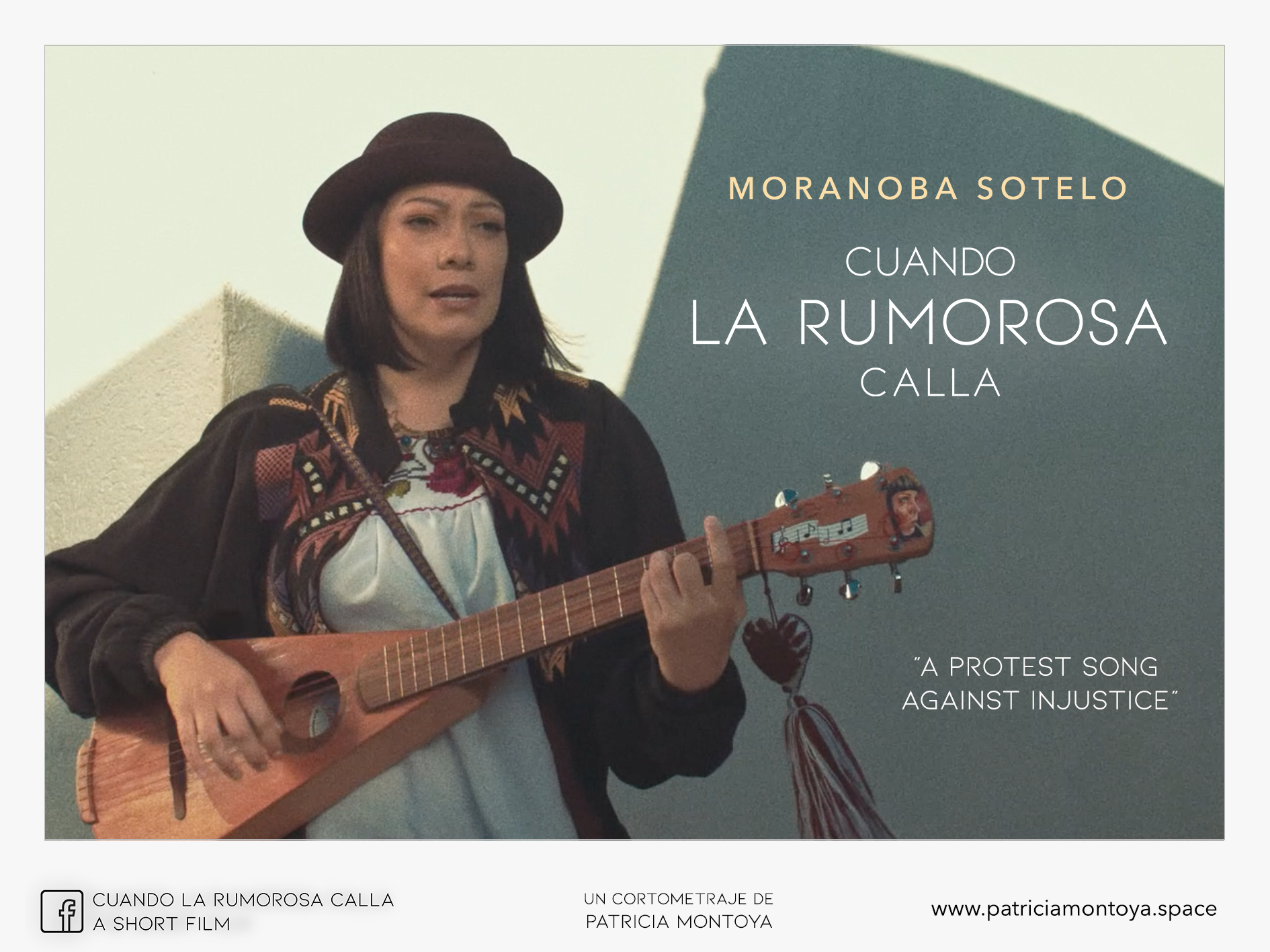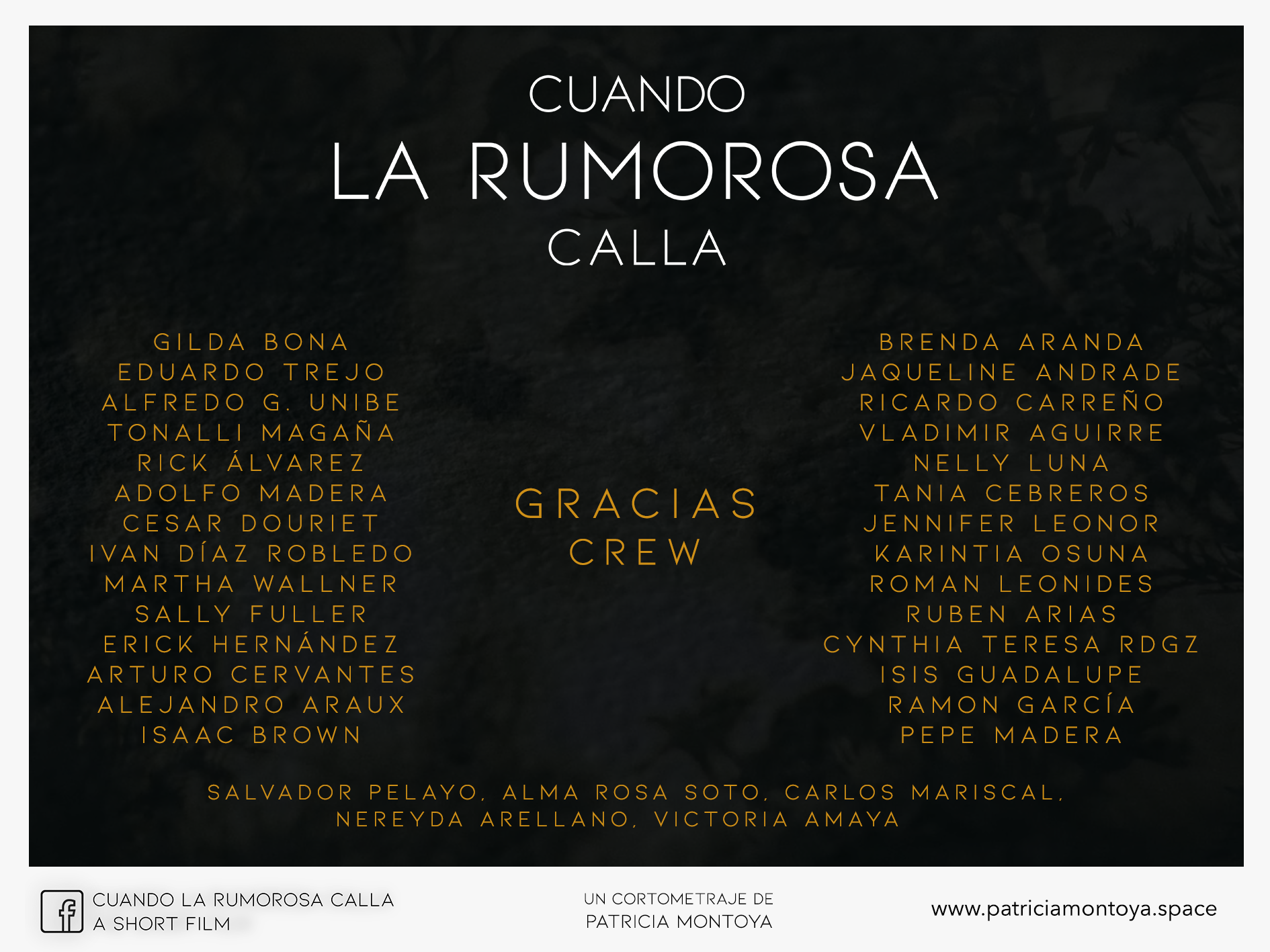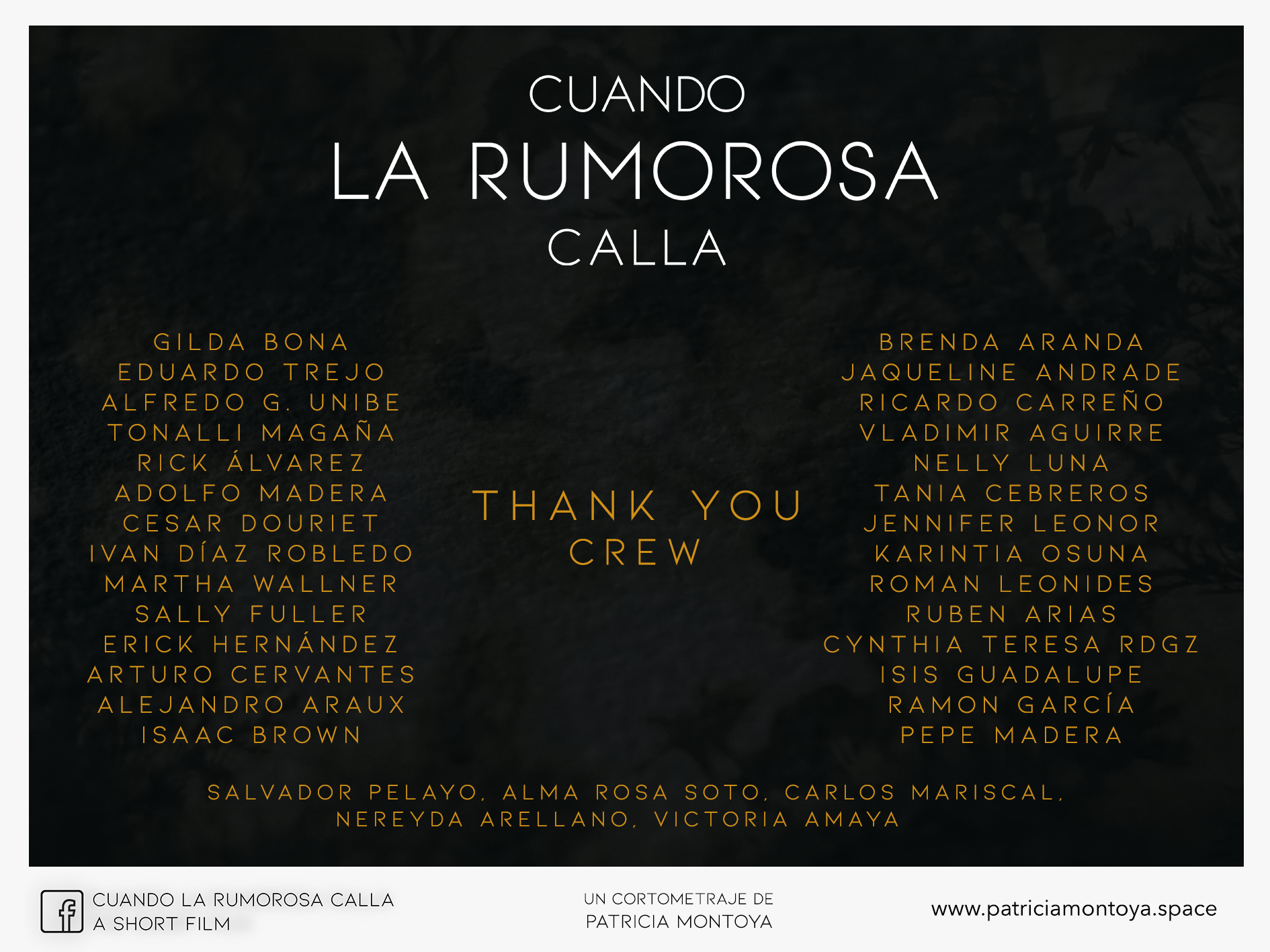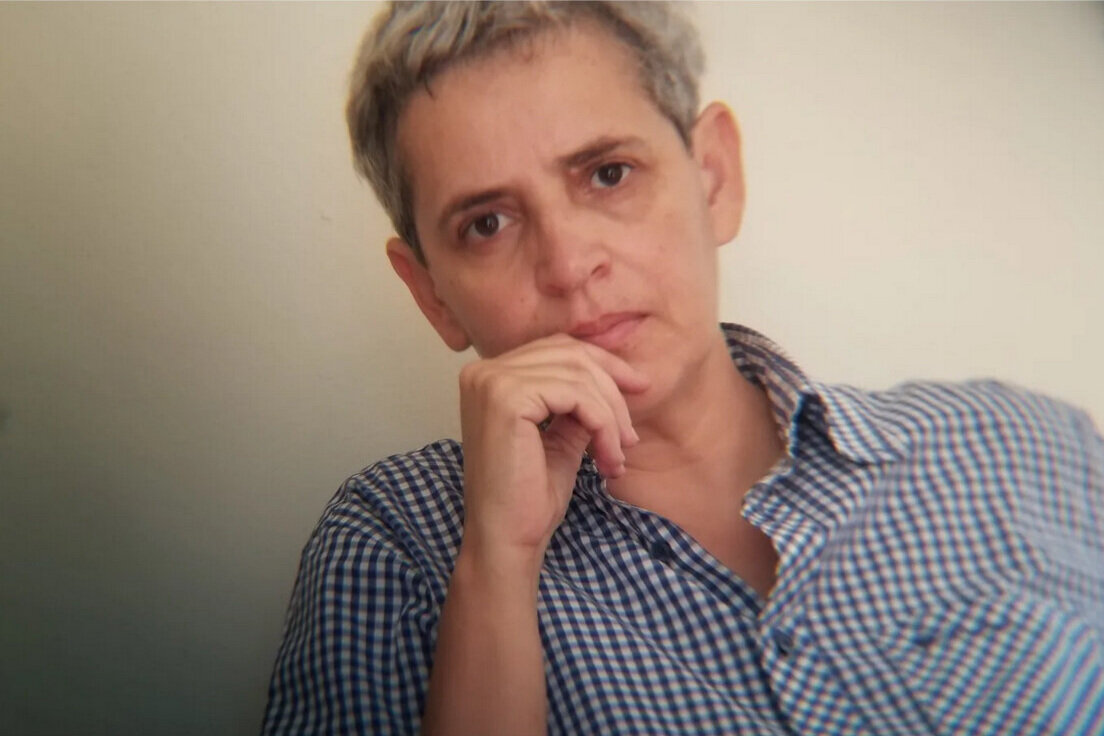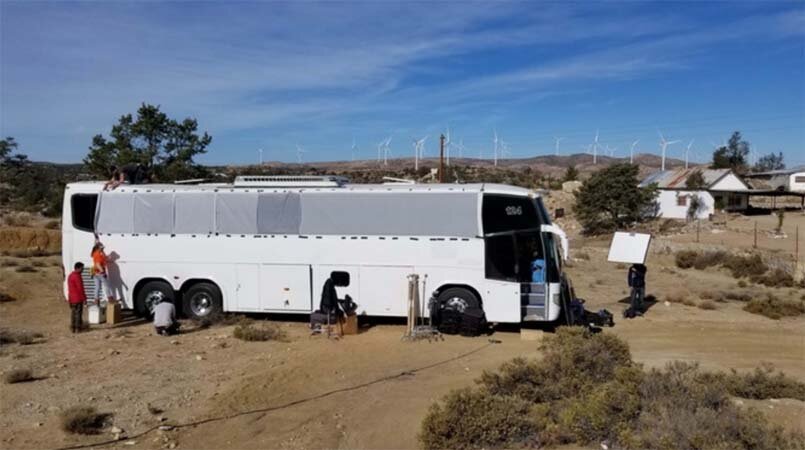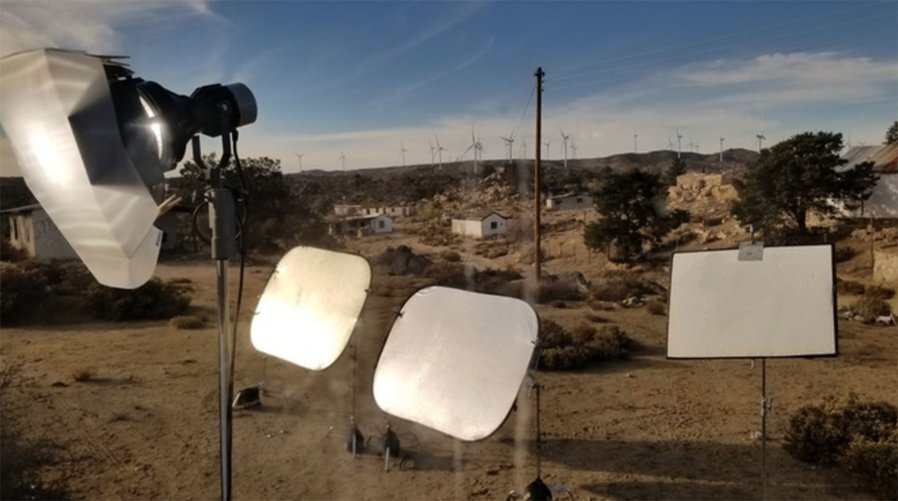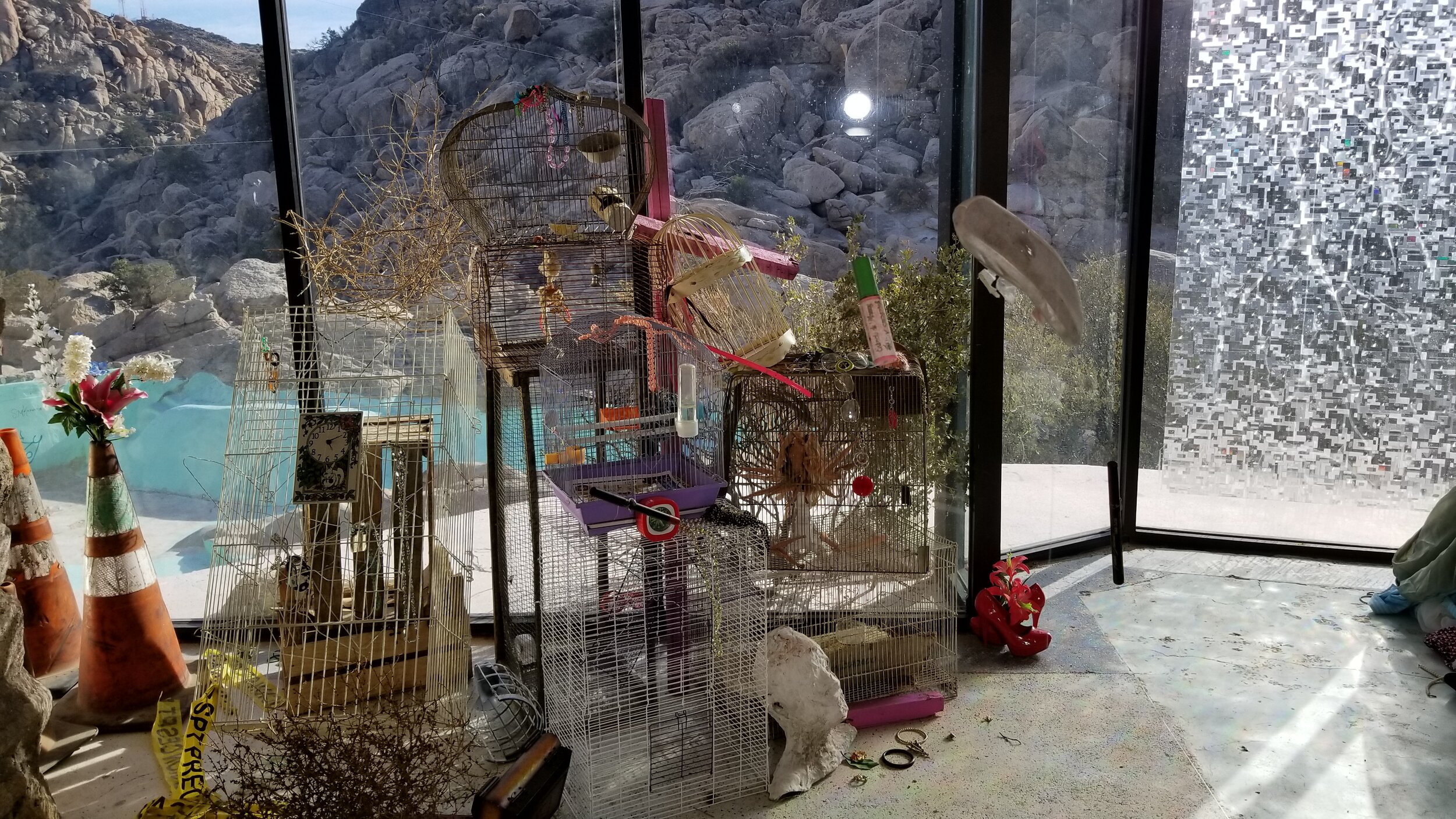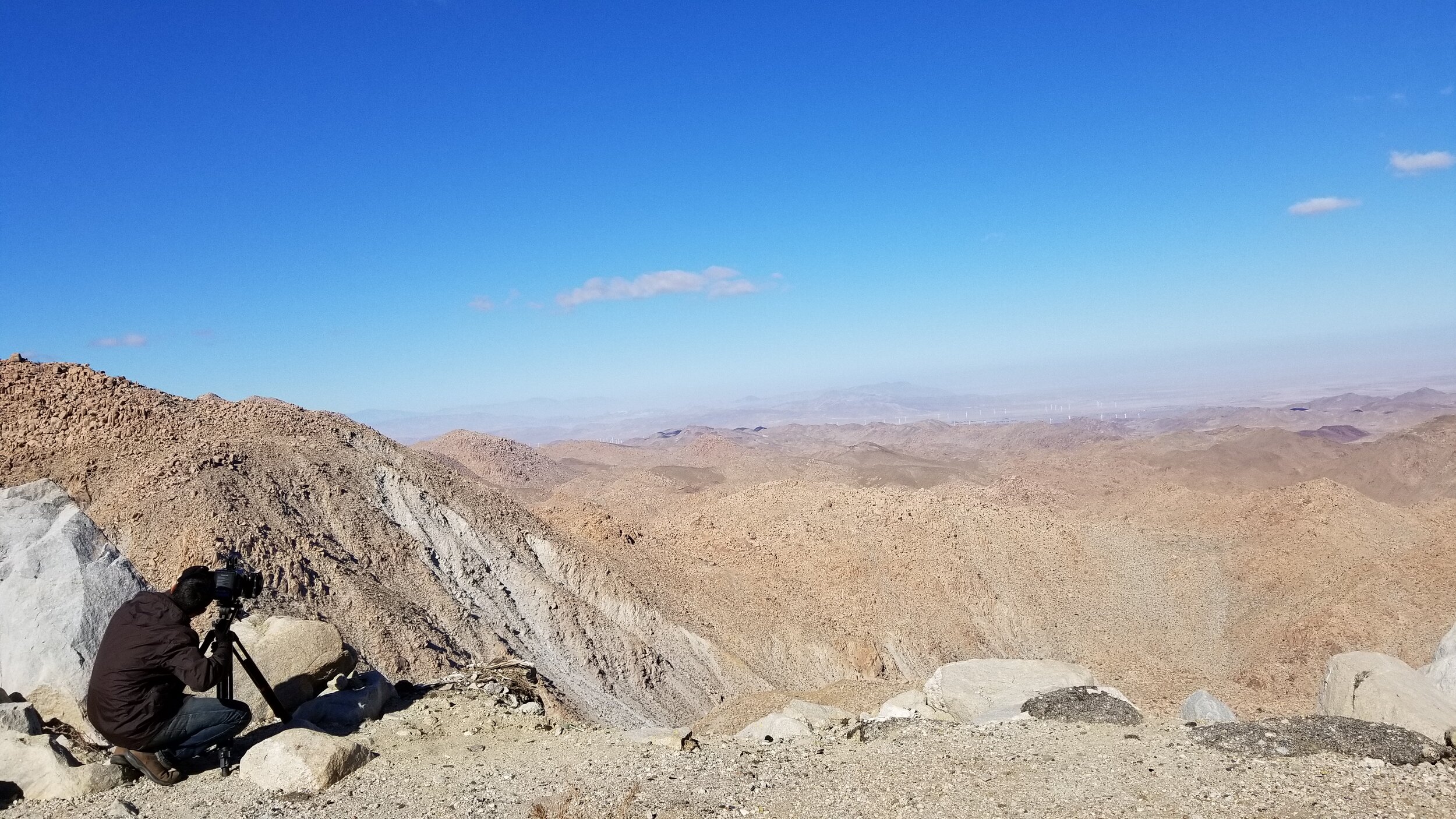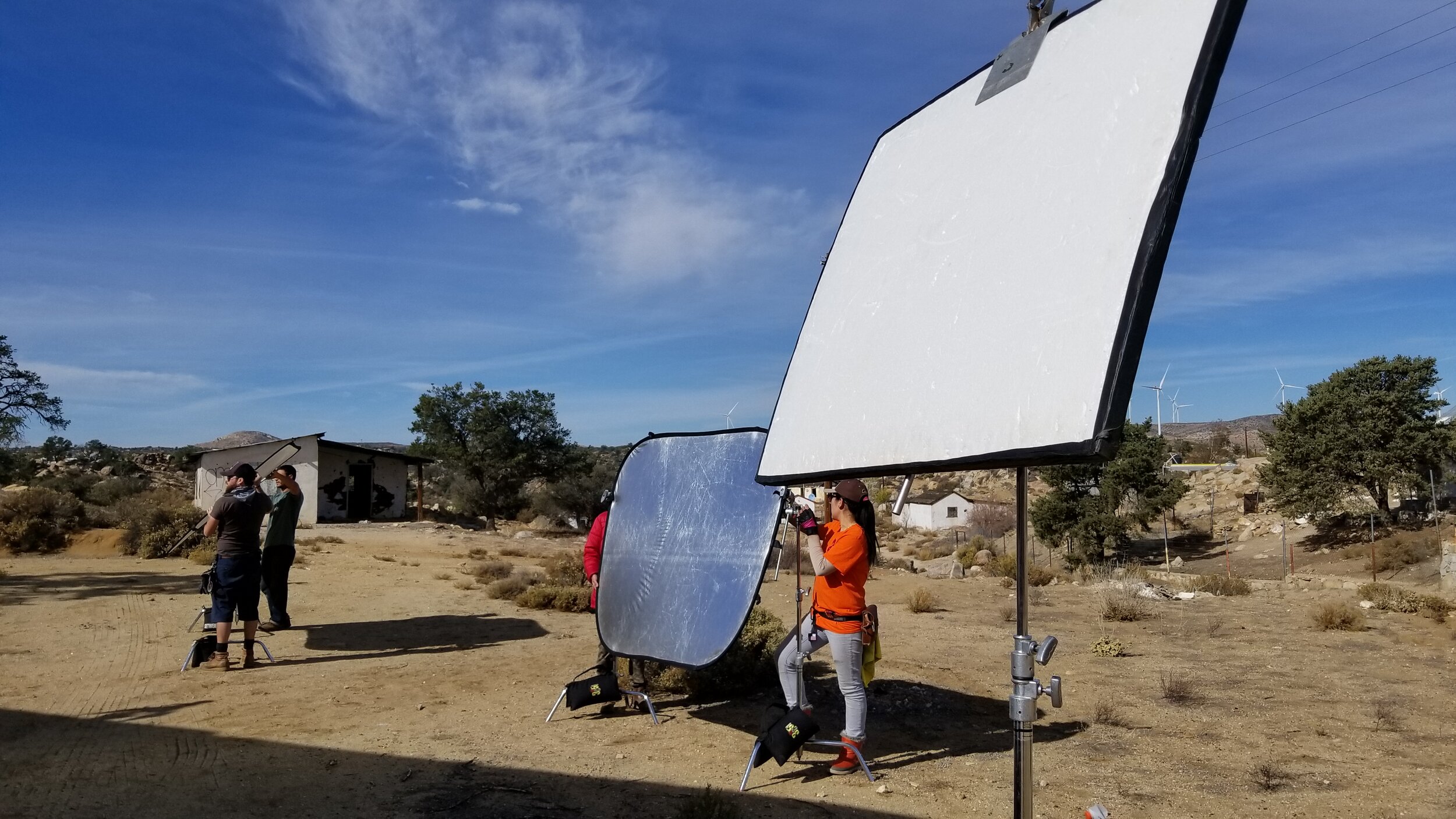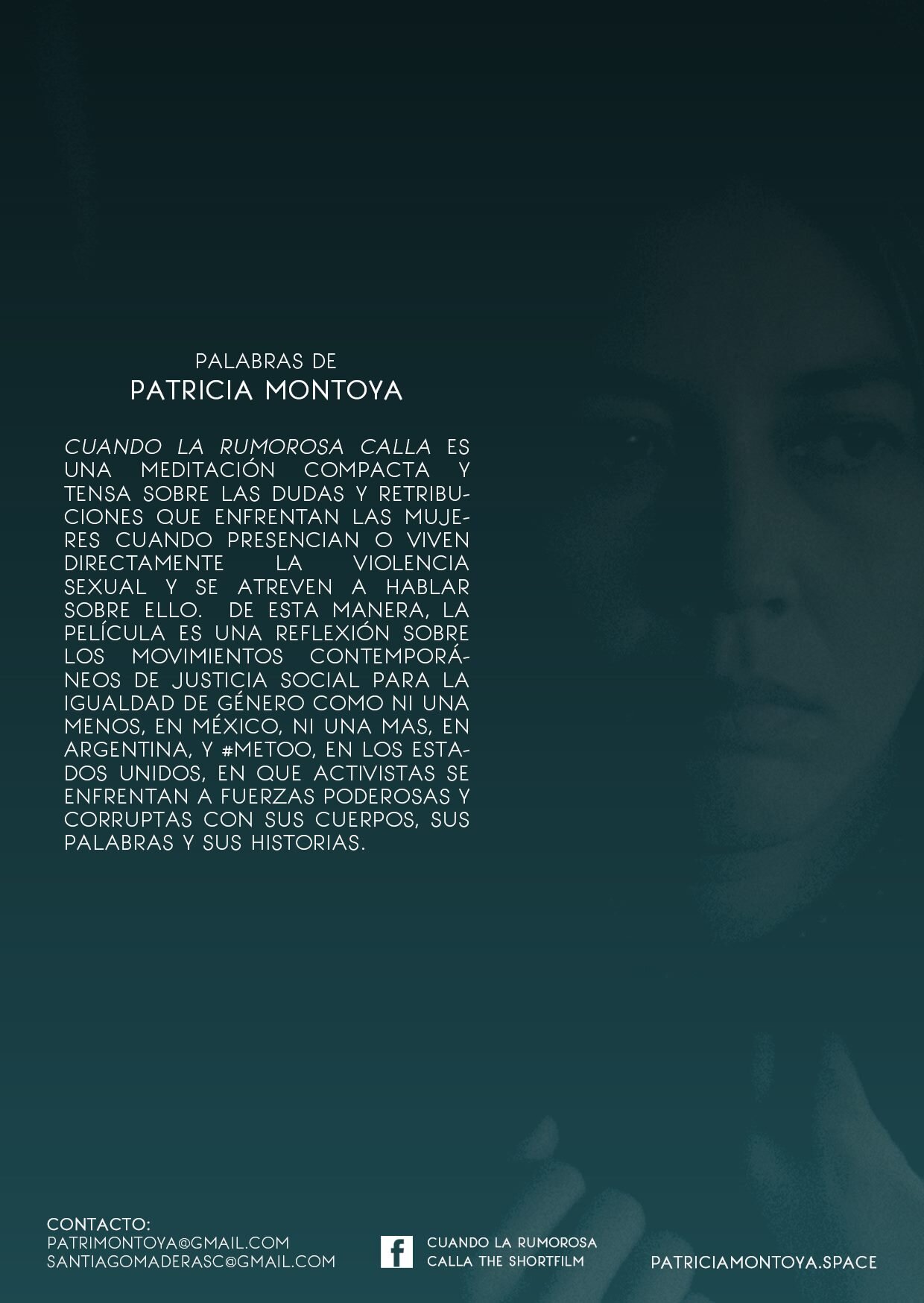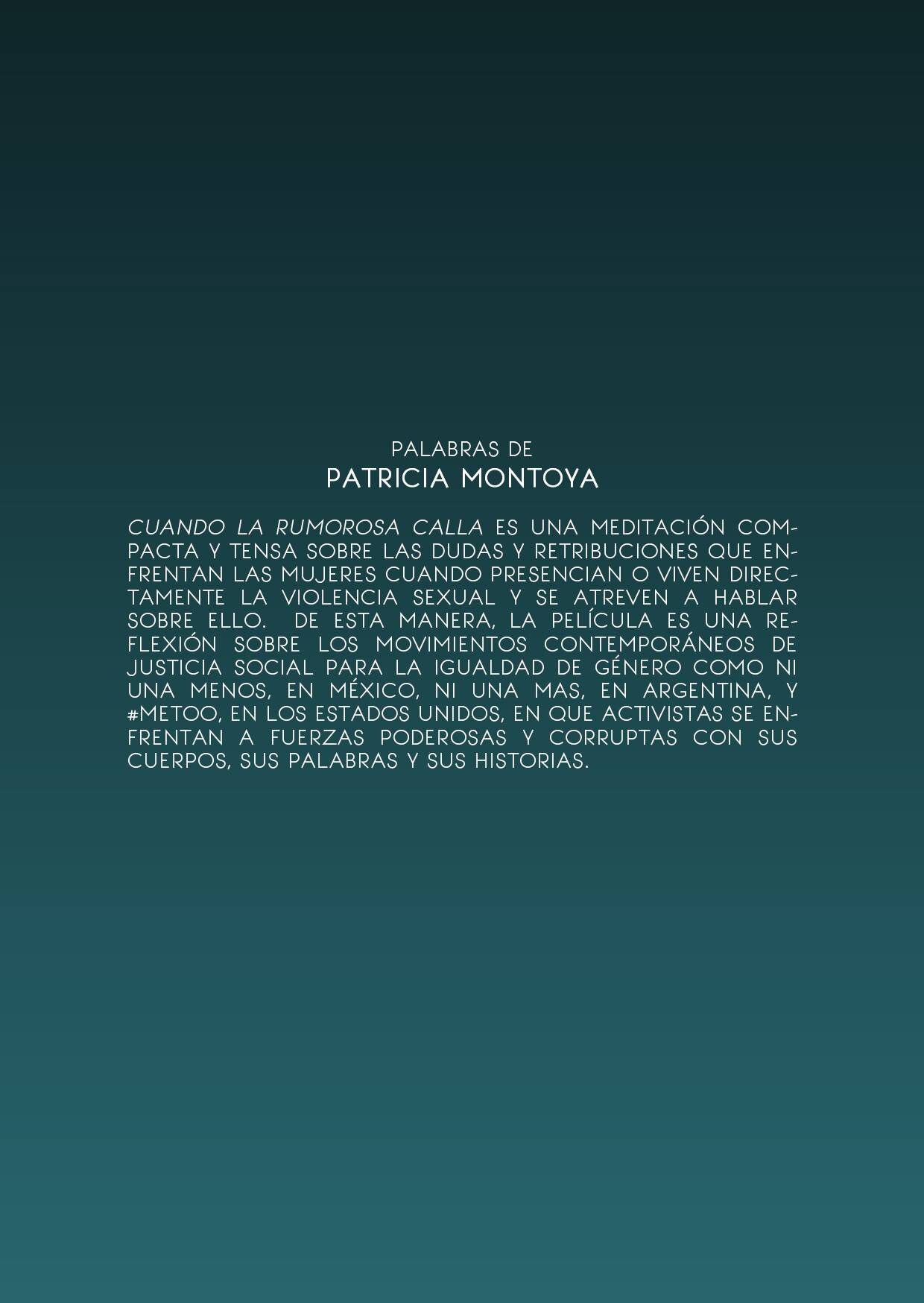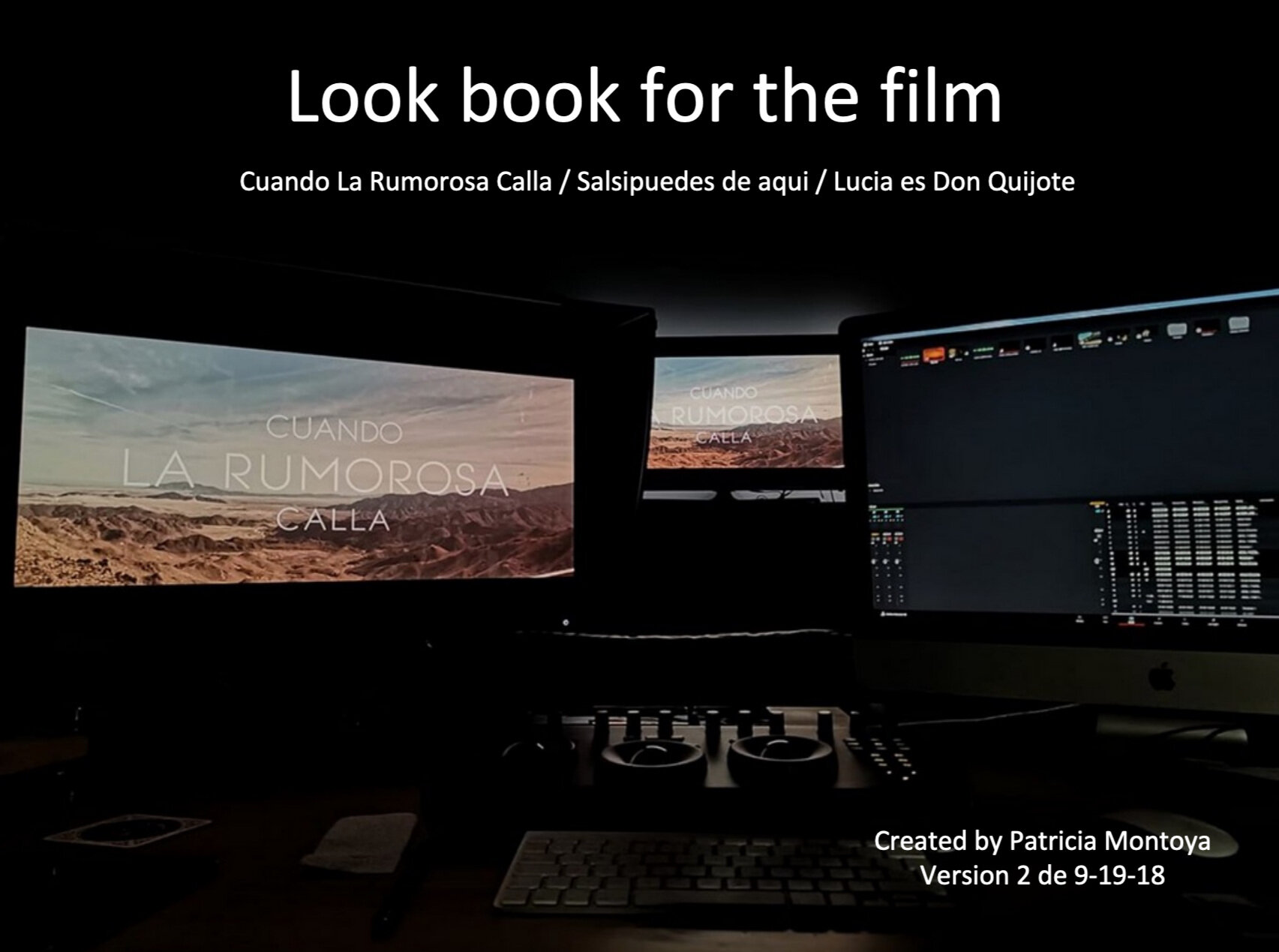Cuando La Rumorosa Calla (When La Rumorosa QuietS)
(Mexico/USA, 17min, 2020, in Spanish with English subtitles)
Written, Produced and Directed by Patricia Montoya and Co-produced by Santiago Madera.
World Book of Short Films
〰️
World Book of Short Films 〰️
Graphic Design Arturo Cervantes/Laurels: Santiago Madera
Honorable Mention
Ganador
Voces Femeninas
Nominado mejor actriz: Yunuen Rhi
Nominado mejor sonorizacion: Tonalli Magaña
Nominado mejor corto de ficcion
Nominado mejor direccion
Festival de Cine Internacional Quetzal,
Cuarta Edición
Mexico, 1/6/2021
Palm Springs, CA
January 4, 2021
Latino Film Market (LFM) 2020
Winner of Special Jury Award
/ Nominated for Best Film Score
/ Winner of Best Song in A Film
MLC Awards
BEST FILM SCORE (Apr-Jun Qtr): 2020
Patricia Montoya (lyrics), Tonalli Magaña (sound mix) and Moranoba Sotelo (performed by)
BEST SONG IN A FILM (Jun-Aug Qtr): 2020
Patricia Montoya (lyrics) and Moranoba Sotelo (lyrics-composition-performance)
SPECIAL JURY MENTION AWARD-(Apr-Jun Qtr): 2020, Memorable L-atino Individual Performance: Yunuen Rh
DRAMATIC ADAPTATION CATEGORY
April 17-26, 2020
AIVFF AWARDS Arts Film Festival,
Cannes, France
May 21-22, 2020
Catalogue
SHORTS MEXICO FESTIVAL INTERNACIONAL DE CORTOMETRAJES DE MEXICO
Cineteca Nacional - Presencial
Festhome TV-Salas Virtuales
September 2 - 18, 2020
Bronze Awards for Best Director (Female)
Best Woman Short
Honorable Mention Award: Best Editing
Independent Shorts Awards, Los Angeles
Bronze Awards:
Best Director (Female)
Best Woman Short
Honorable Mention Award:
Best Editing: Alfredo G. Unibe
January 2020
Lucia Octavio boards a bus in the middle of a mountainous border town and wakes up naked when the bus arrives at the station. Confused and alone, yet determined and brave, Lucia confronts the attackers that threaten her.
When La Rumorosa Calla, is an experimental narrative film short based on the play, El lobizón de tras la la sierra, by Gilda Bona (Argentina, Mundos celestiales - ebook, Editorial, Eudeba), tells the story of Lucía Octavio, a journalist on the way to investigate a series of femicides in a town located on the border between the United States and Mexico, and where she wakes up naked at the end of a night bus trip.
Baja Film Commission (Trailer, Santiago Madera)
With an intricate dialogue and the nakedness of her body, Lucia confronts the men and discovers a plot between the bus driver, the man who assaulted her and the policeman called to investigate. An open ending offers the possibility that Lucia escaped or succumbed to the imminent attack that ensues.
When La Rumorosa Calla addresses the struggle for humanity, dignity and life people who, involved in an unequal confrontation with more powerful and corrupt forces, choose a heart-wrenching fight with their bodies, their words and their stories.
Catrina Dolls, handmade by the Madera Family for fundraising campaign, IndieGogo 2019
When La Rumorosa Calla is created within the framework of social justice movements and inspired by contemporary acts of resistance and feminists such as Ni Una Menos, in Mexico, Ni Una Mas, in Argentina, #MeToo and Black Lives Matter in the United States in which, activists confront, with their half-naked bodies and declarations screaming against sexual abuse, assault, violence and hate crimes, patriarchy and machista authoritarian systems everywhere.
The film is inspired by experimental feminist films of Yvonne Rainer, Barbara Hammer, Chris Strand and Ana Mendieta who celebrated the naked body of women, not for the pleasure of men, but to retake it, dismantle taboos, and express directly the pain and wounds caused by patriarchy and male supremacy.
Cuando La Rumorosa Calla, Film Still.
The theme of the short is influenced by the documentary Señorita Extraviada (Lourdes Portillo, USA, 2002), which describes the complicity of the government and the authorities in rapes and chilling murders of women in Ciudad Juárez, A more recent echo, LasTesis, Chile, confront sexual assault with staged performance, chants and song.
When La Rumorosa Calla is told in an experimental melodrama genre with Film Noir tones. The structure is framed within a bus trip a from dusk to dawn along the route San Felipe-La Rumorosa, Baja California, MX, punctuated by dreamy flashbacks that interrupt the linearity of the present to tell what happens in the Inside the bus on the long night trip.
The bus scenario, recreated in the original play as a claustrophobic and minimalist space in Cuando La Rumorosa Calla, becomes a space detached from reality, taken to the surrealism of Luis Buñuel's cinema and his film Subida al Cielo (Mexico, 1952).
Graphic Design by Arturo Cervantes
I maintain in the mise-en-scène, the narrowness, the claustrophobia and the horror of the dark night so masterfully represented by Gilda Bona in El lobizón de tras la sierra, and that I try to recreate humbly in my own way.
Prize awarded by AIVFF AWARDS Arts Film Festival, May 2020
White Glove Services (glovewhiteservice@gmail.com)
Eric Sauer, December 2020
Rick Alvarez. Color Grading; Five College Women Studies Research Center, Five College, Inc; Casa Magaña,Tonalli Magaña, Sound Editor; Cinema Verite, Adolfo Madera, Casting; Baja Norte, Baja Film Commssion; Studio 3351, Production Gear; Centro Cultural Tijuana; Kegels for Hegel; Hampshire College; IndieGogo









